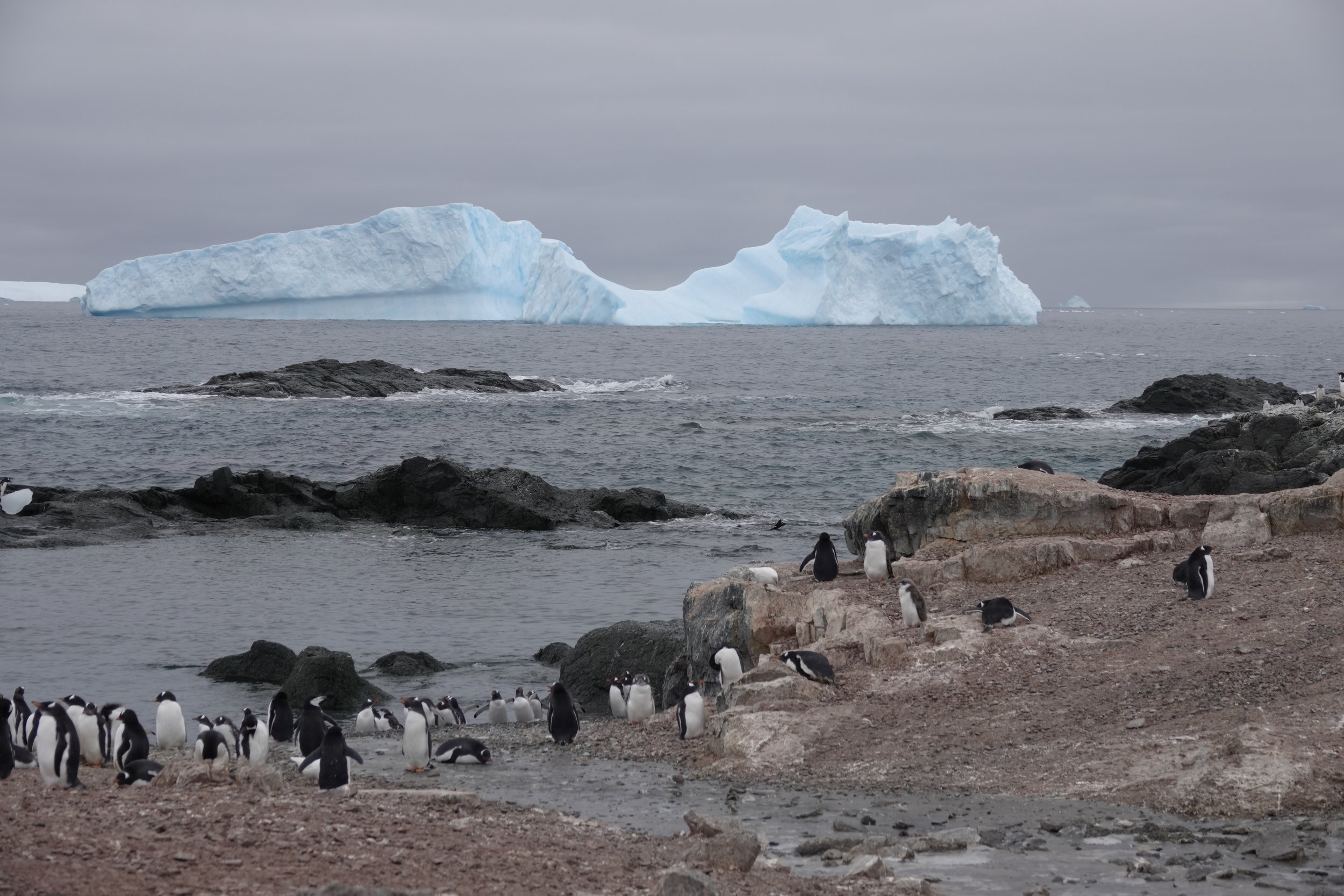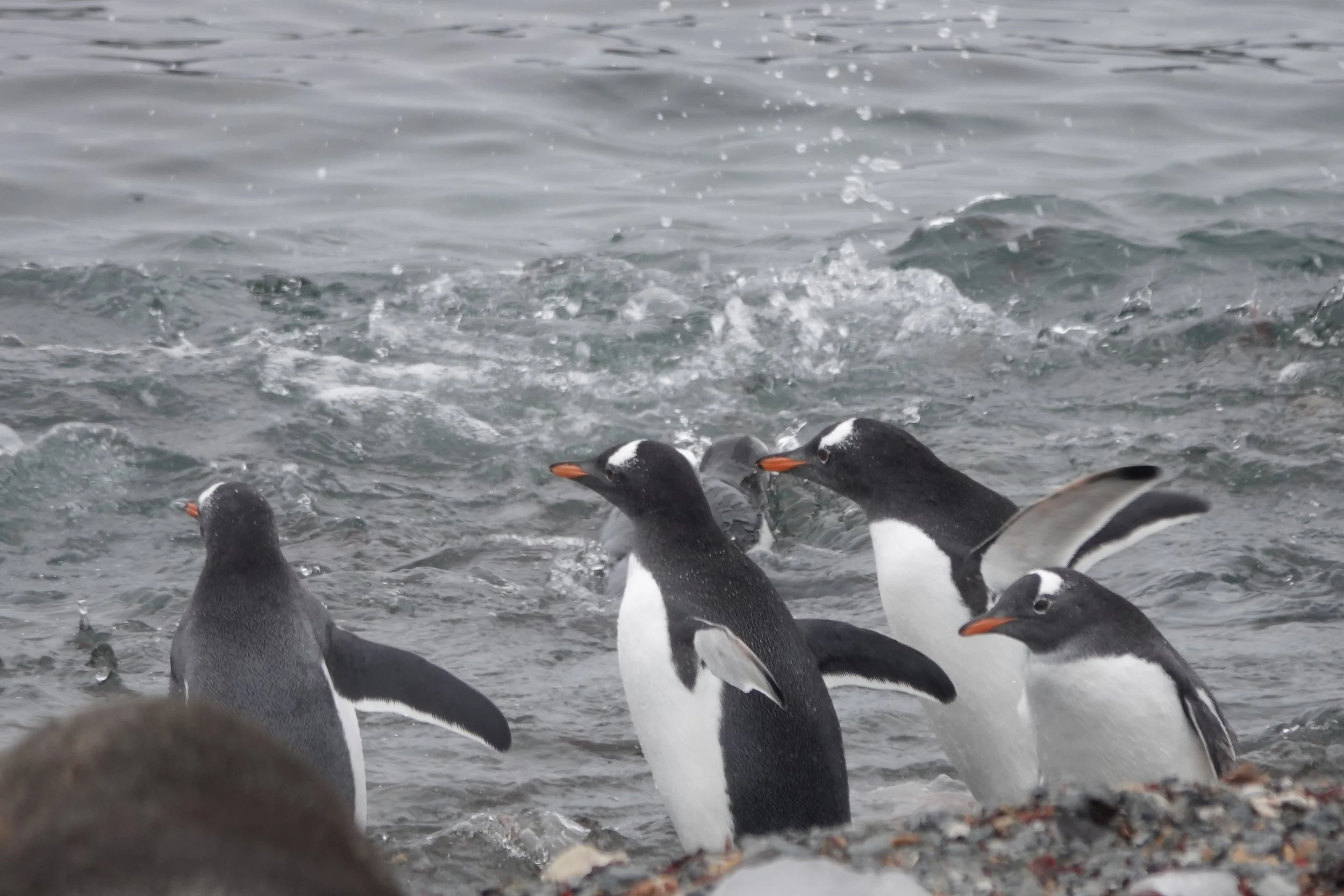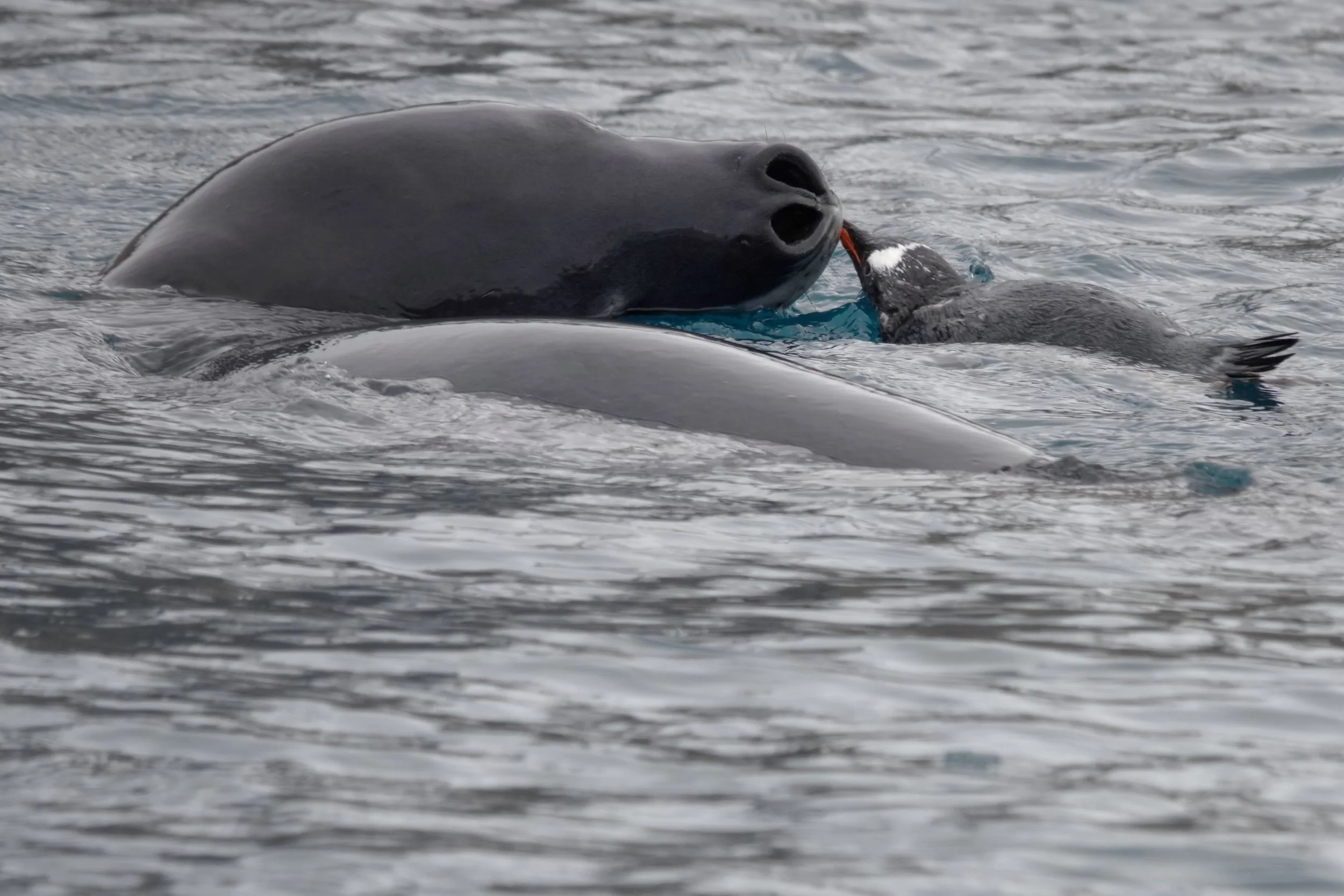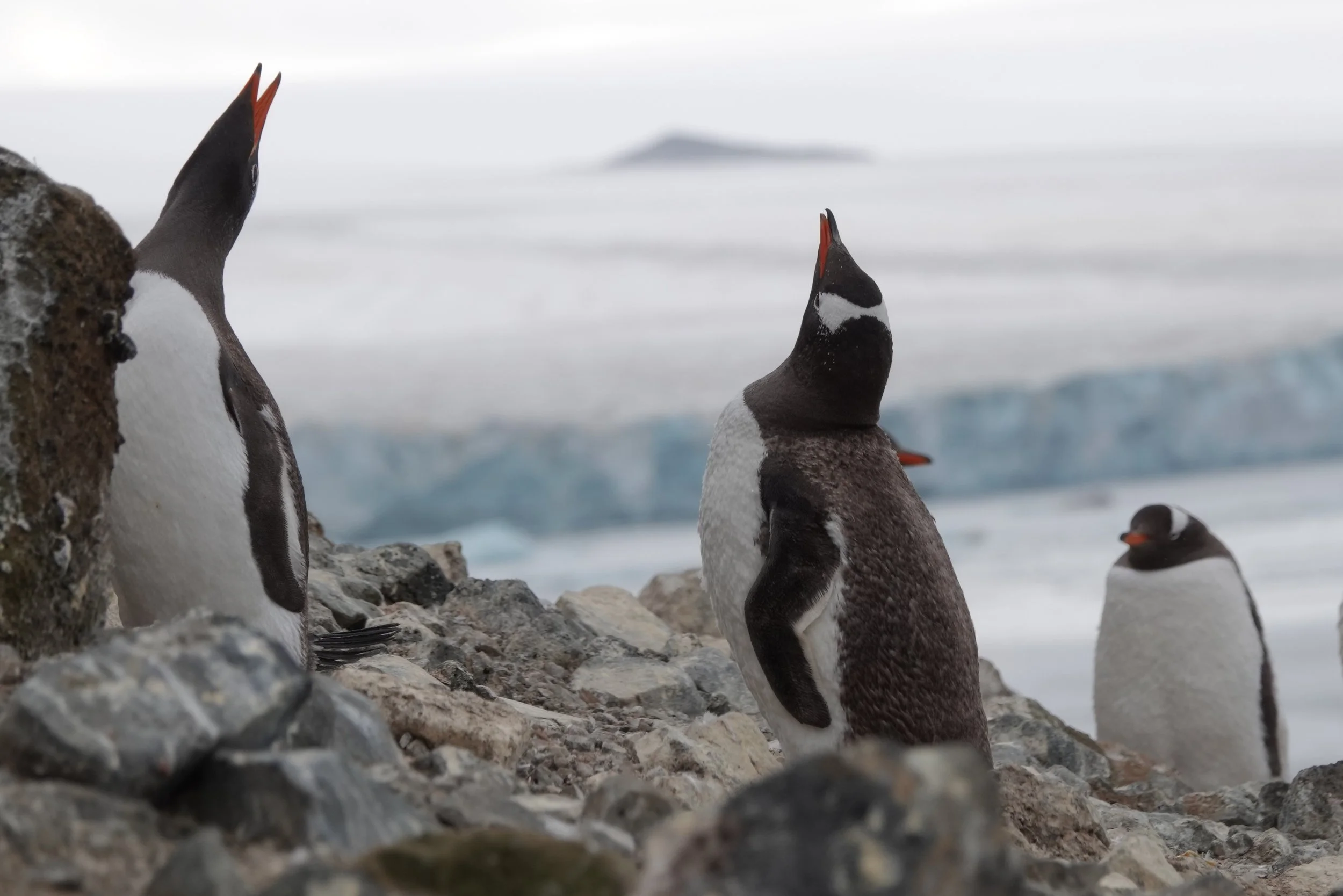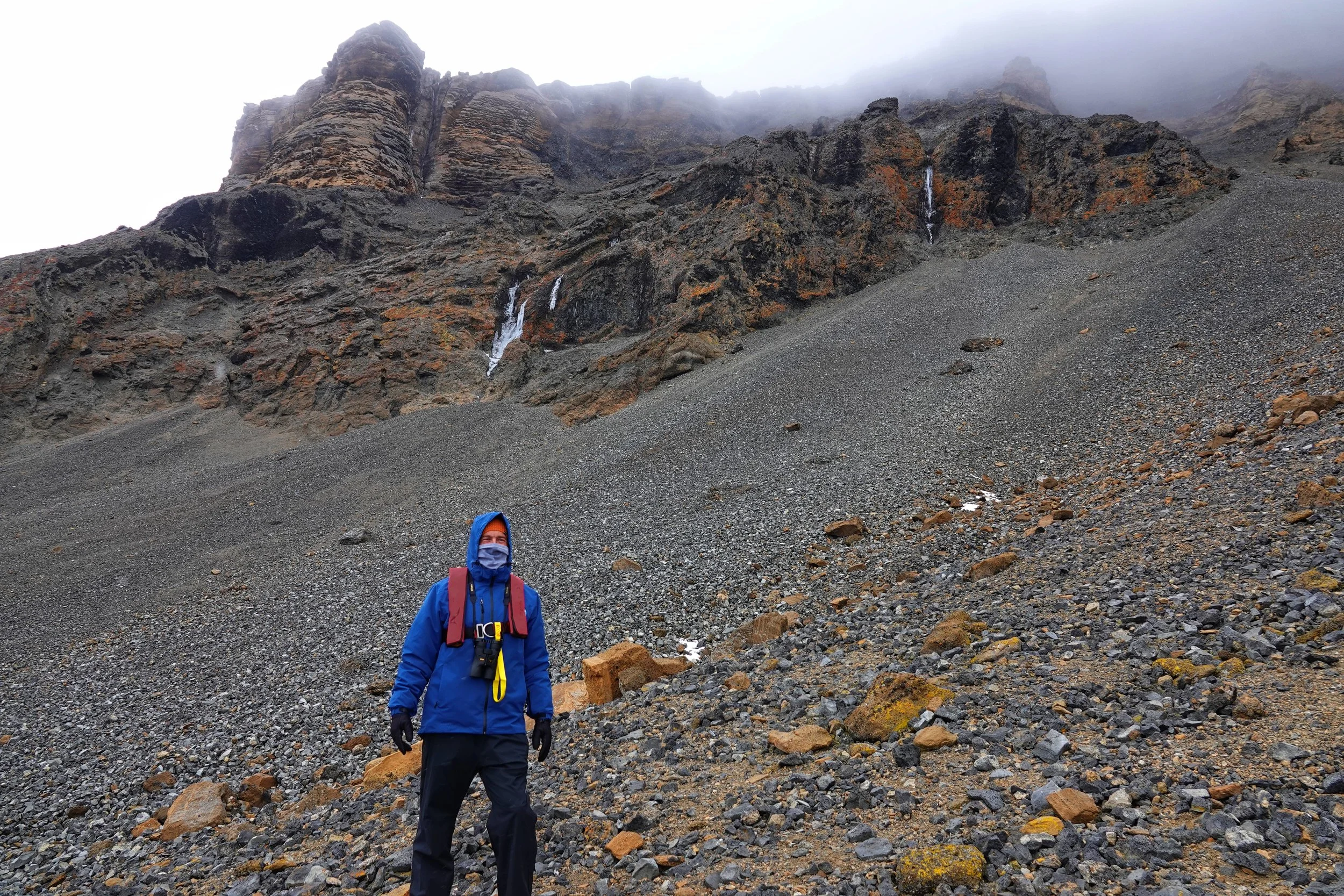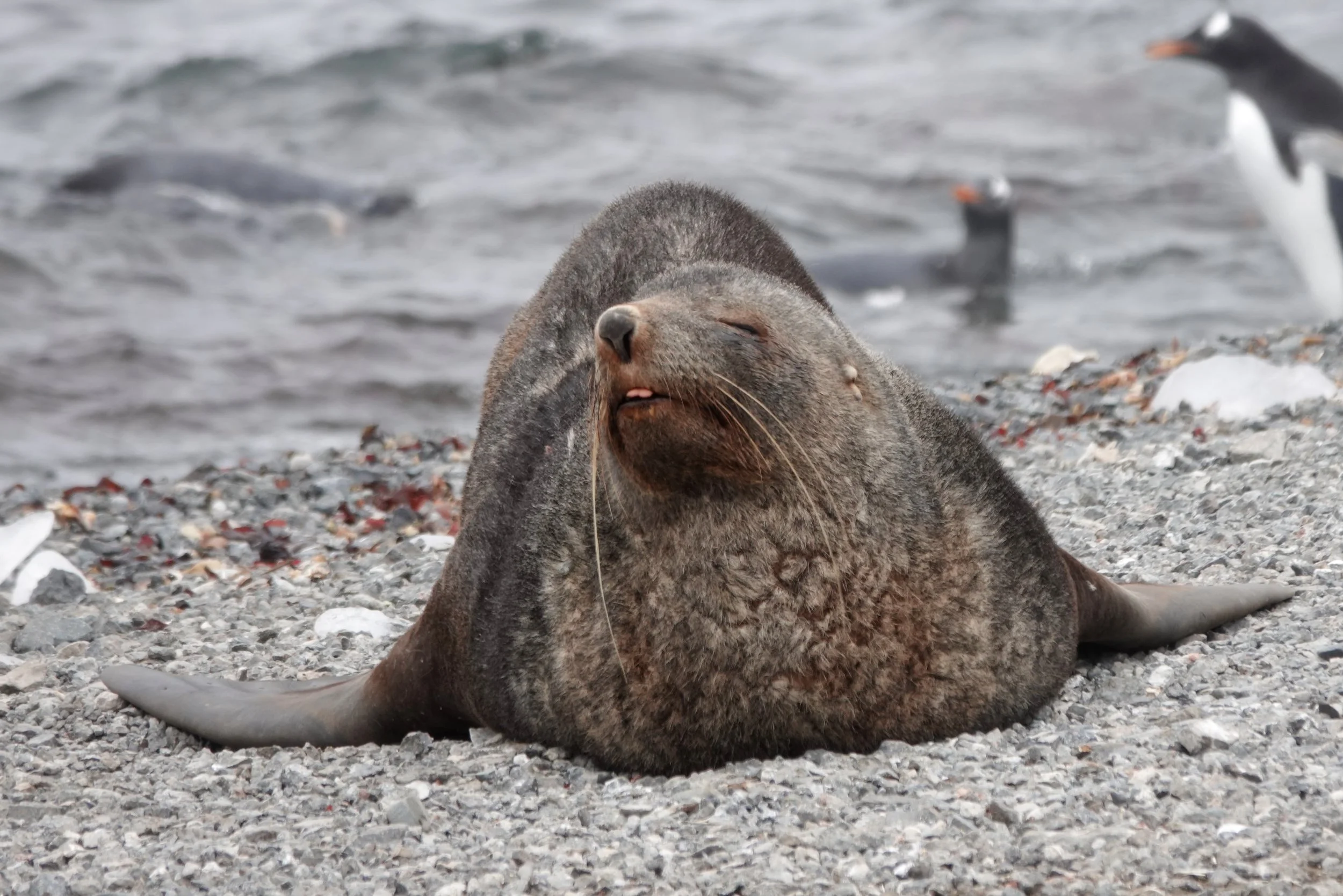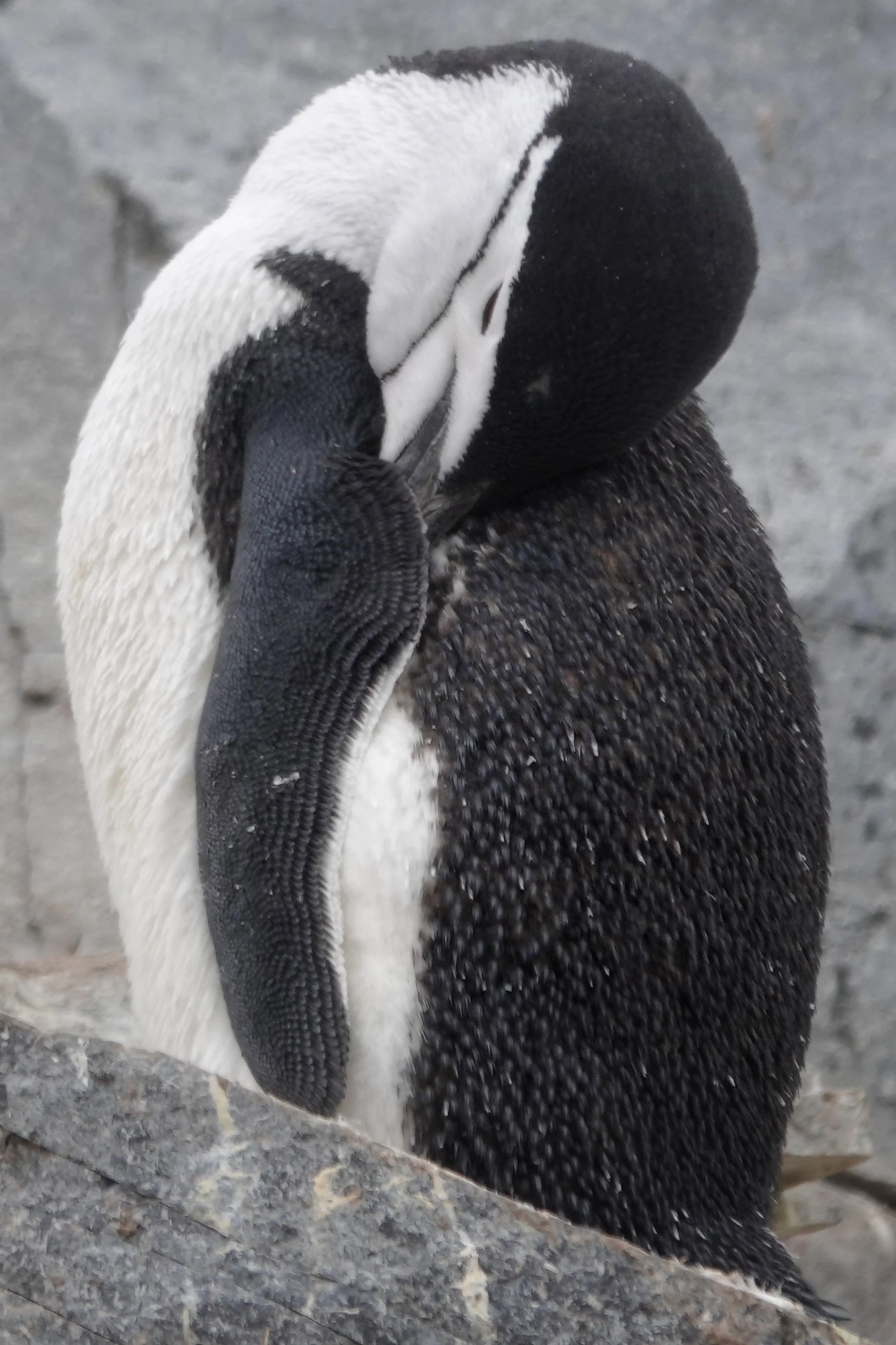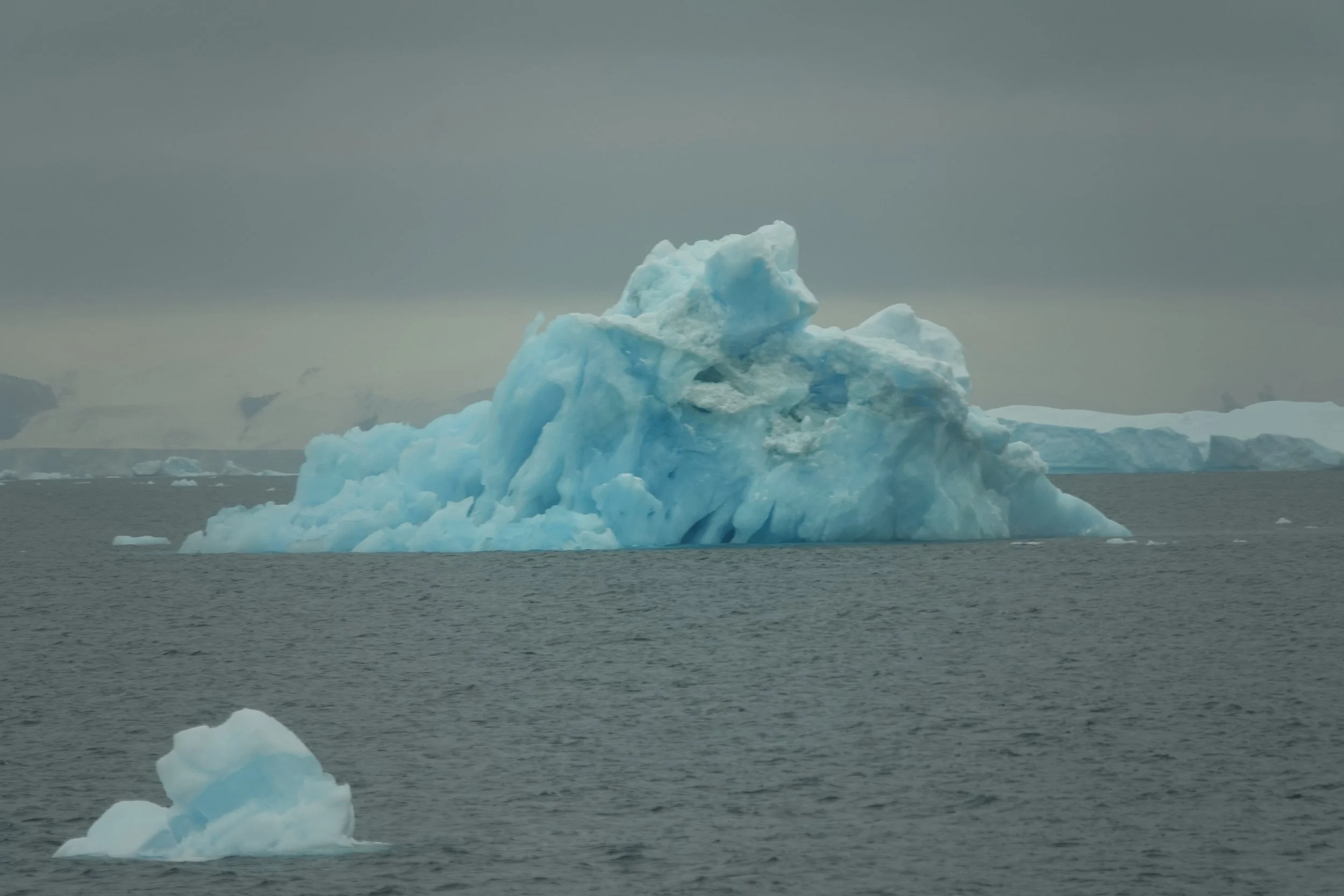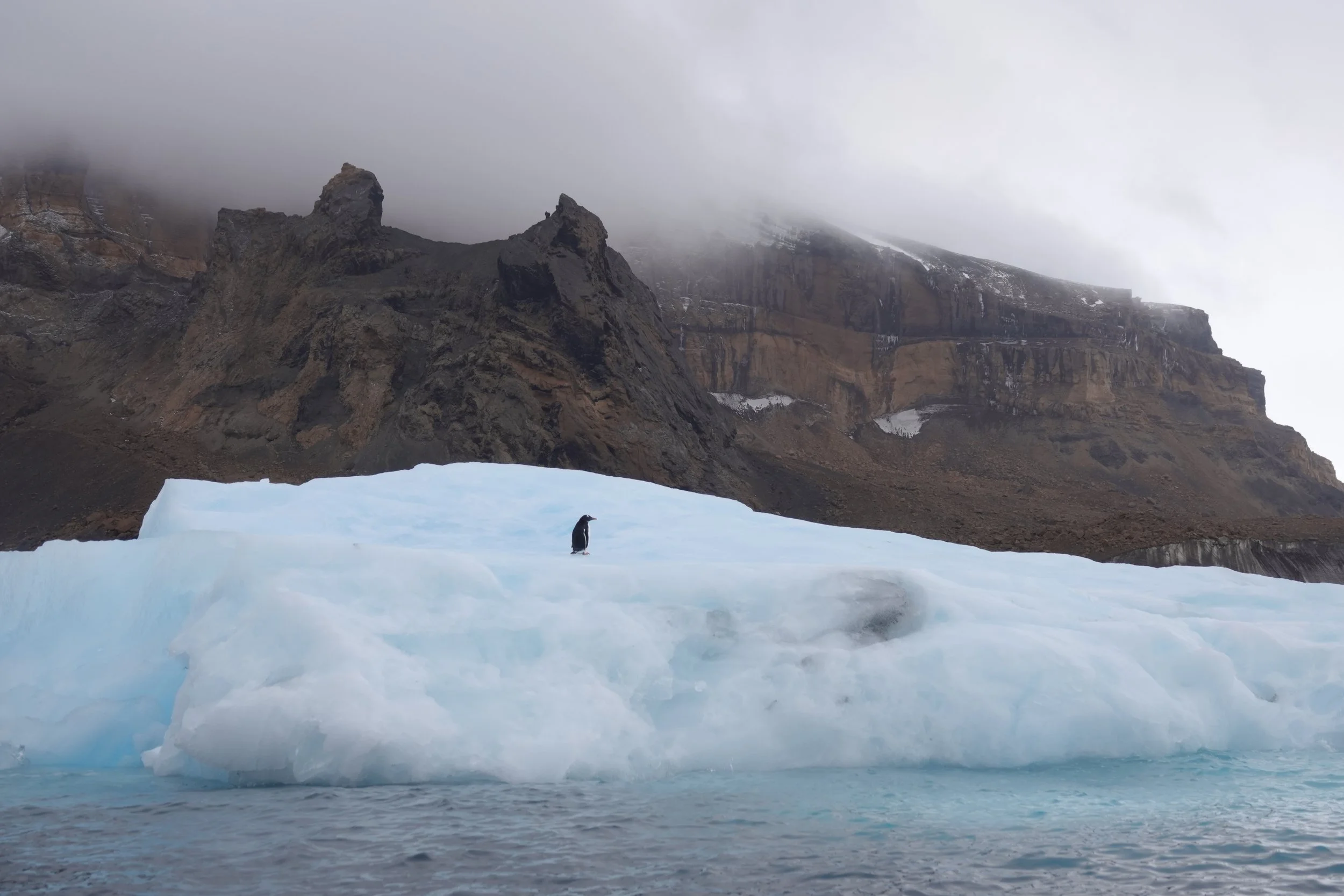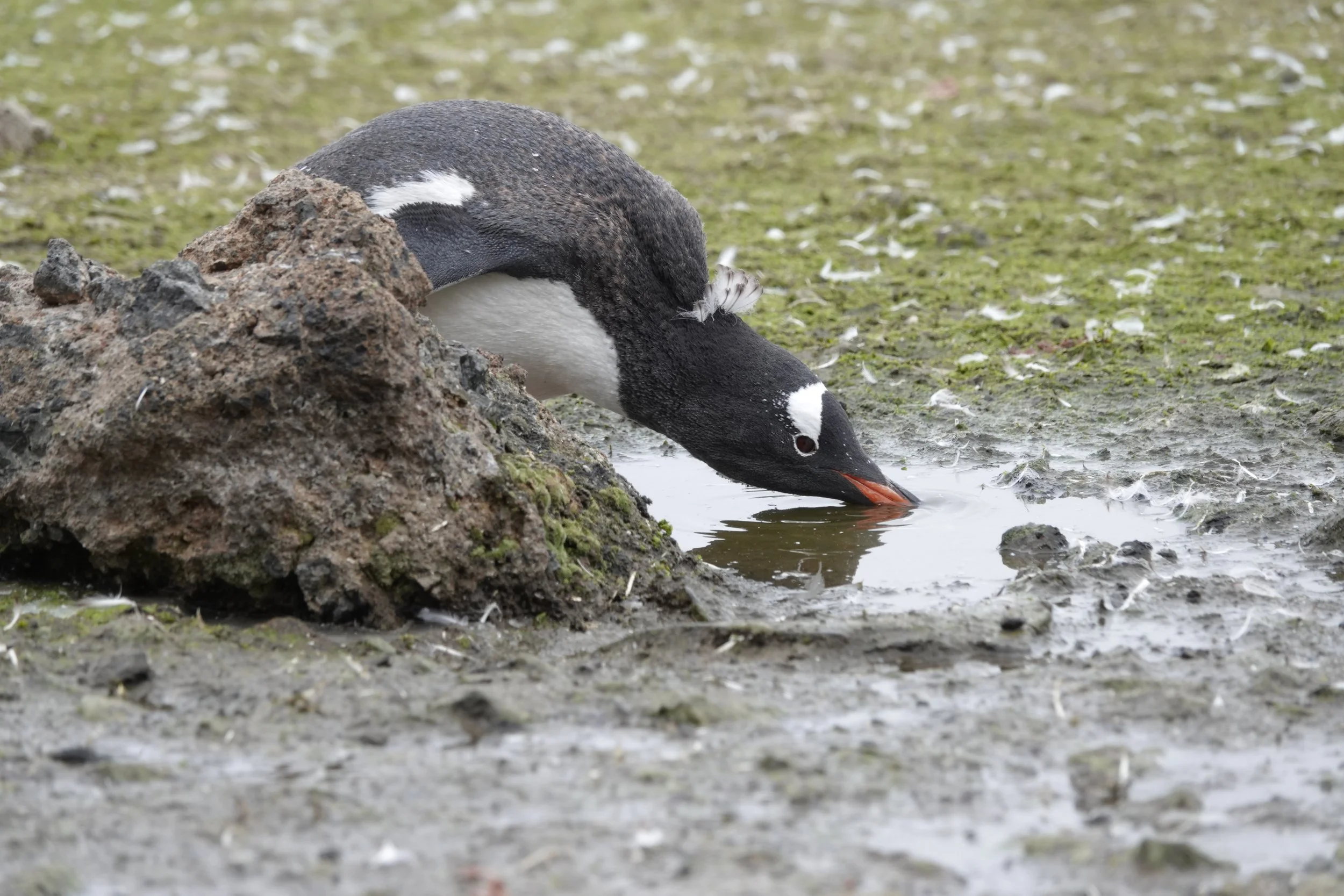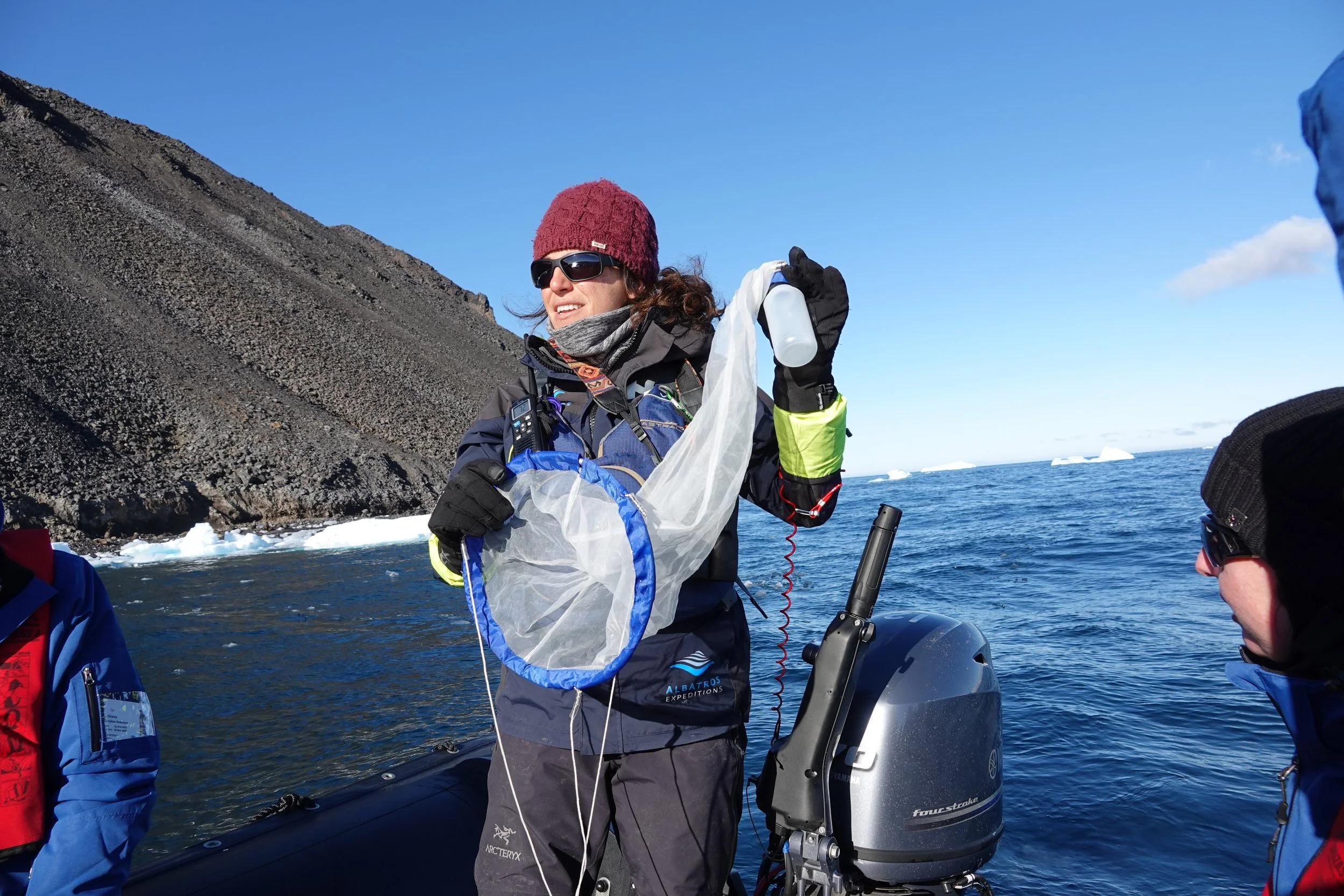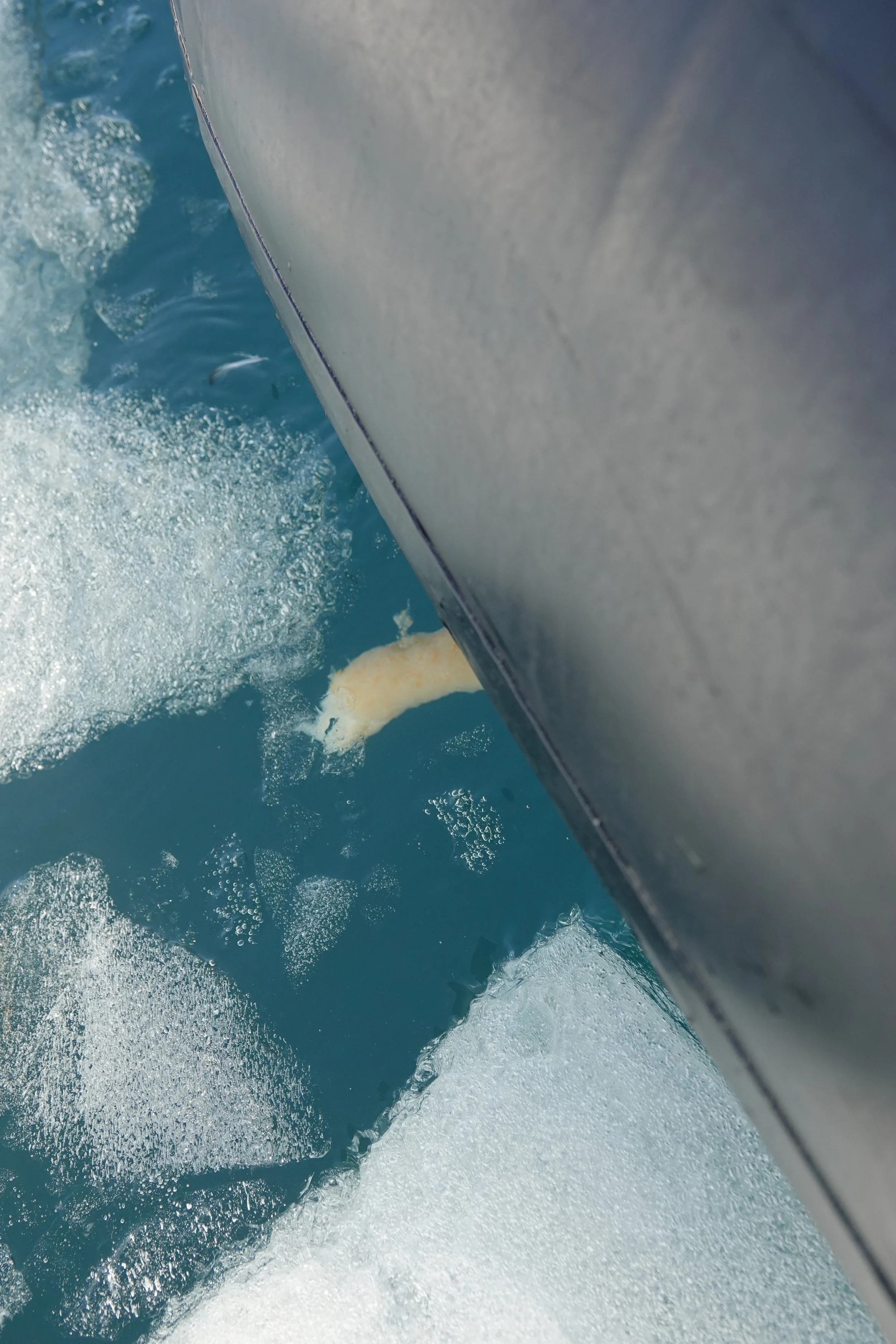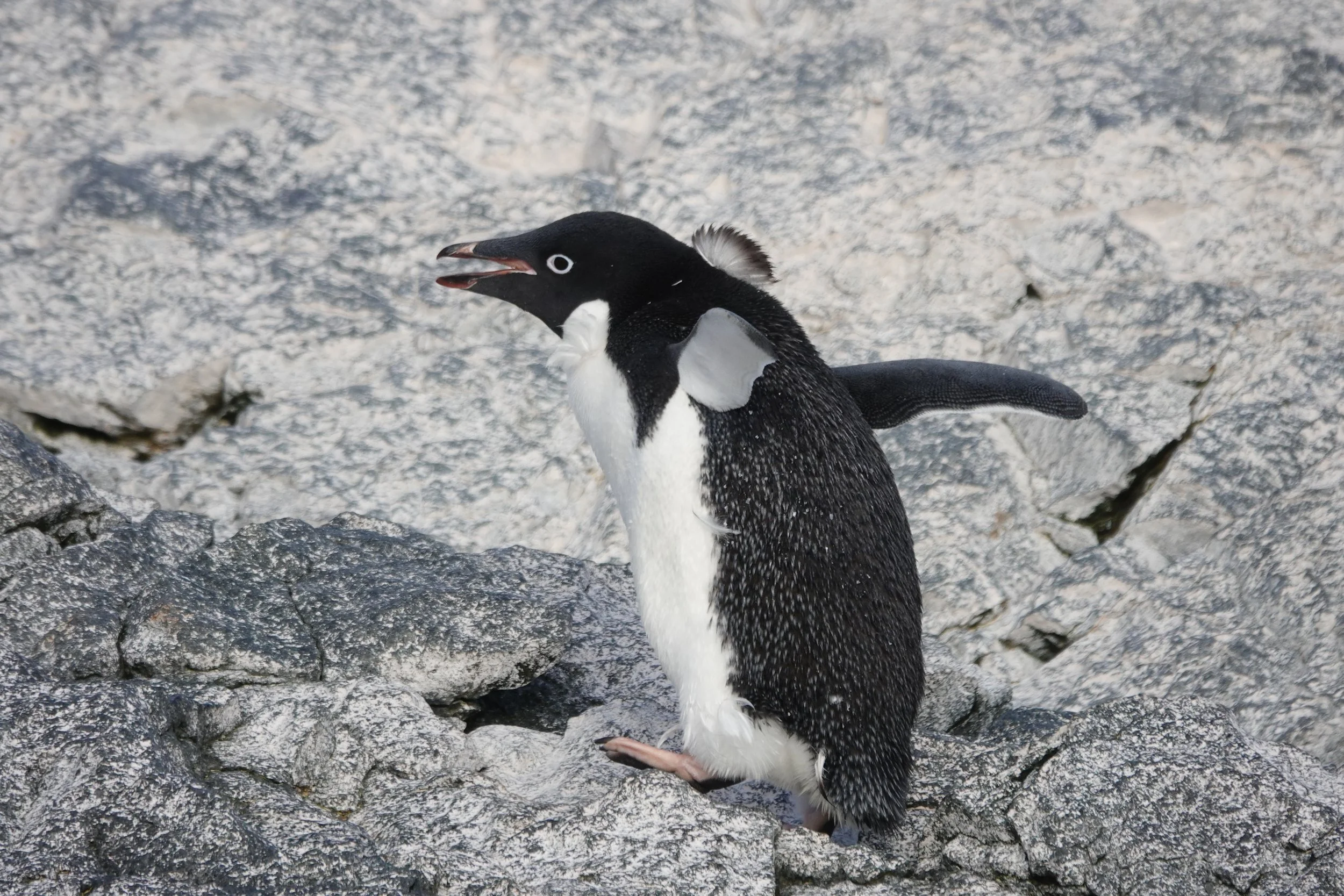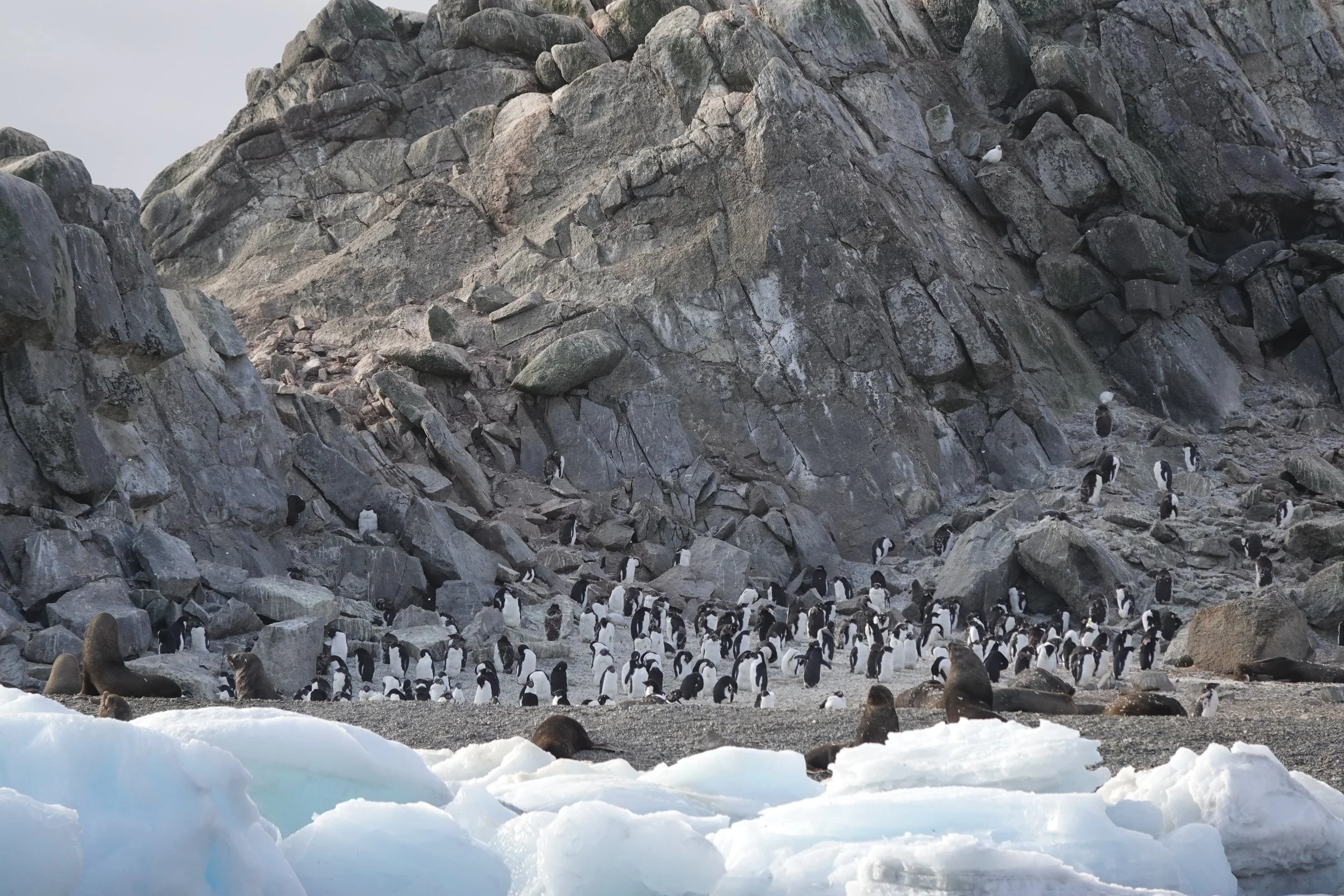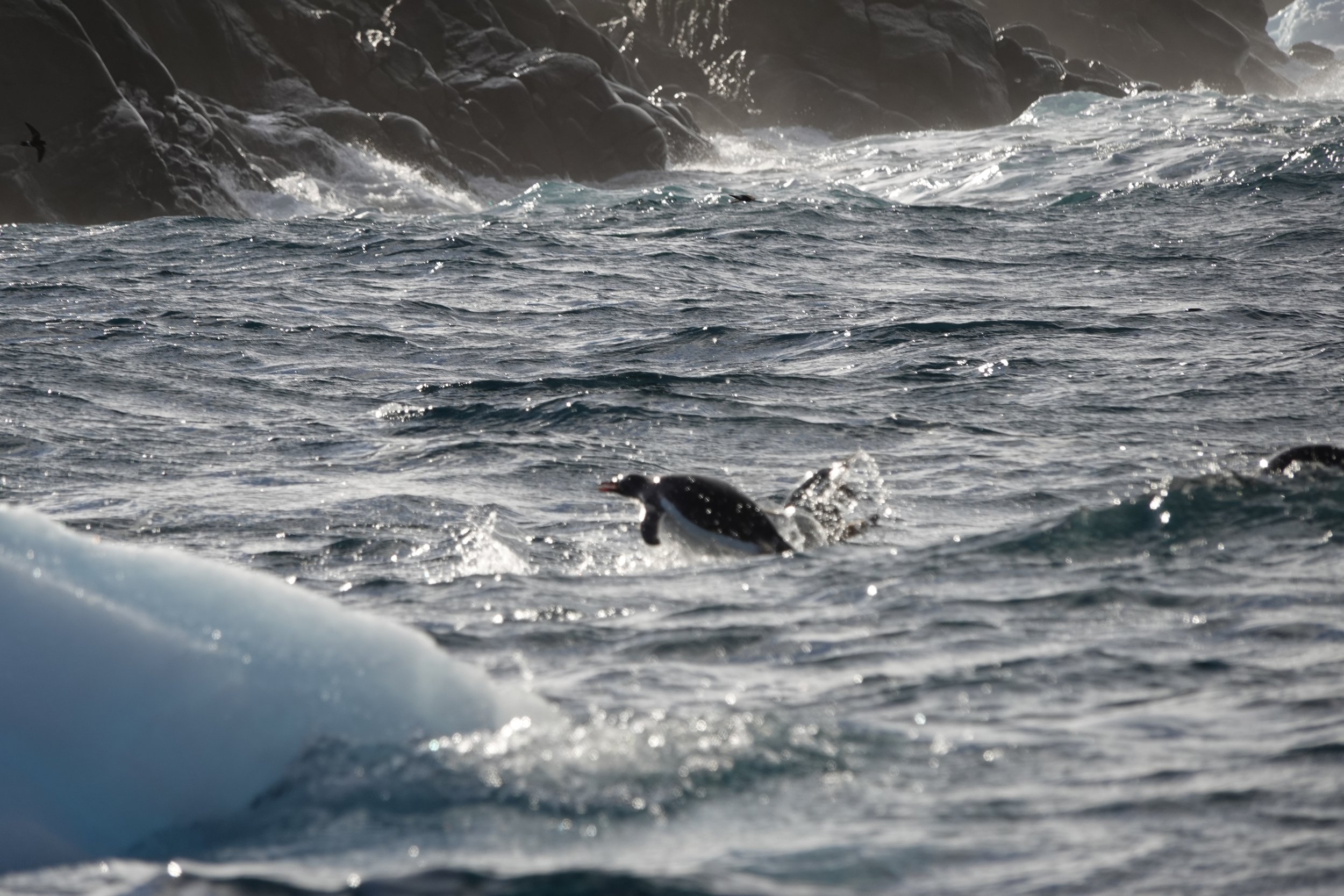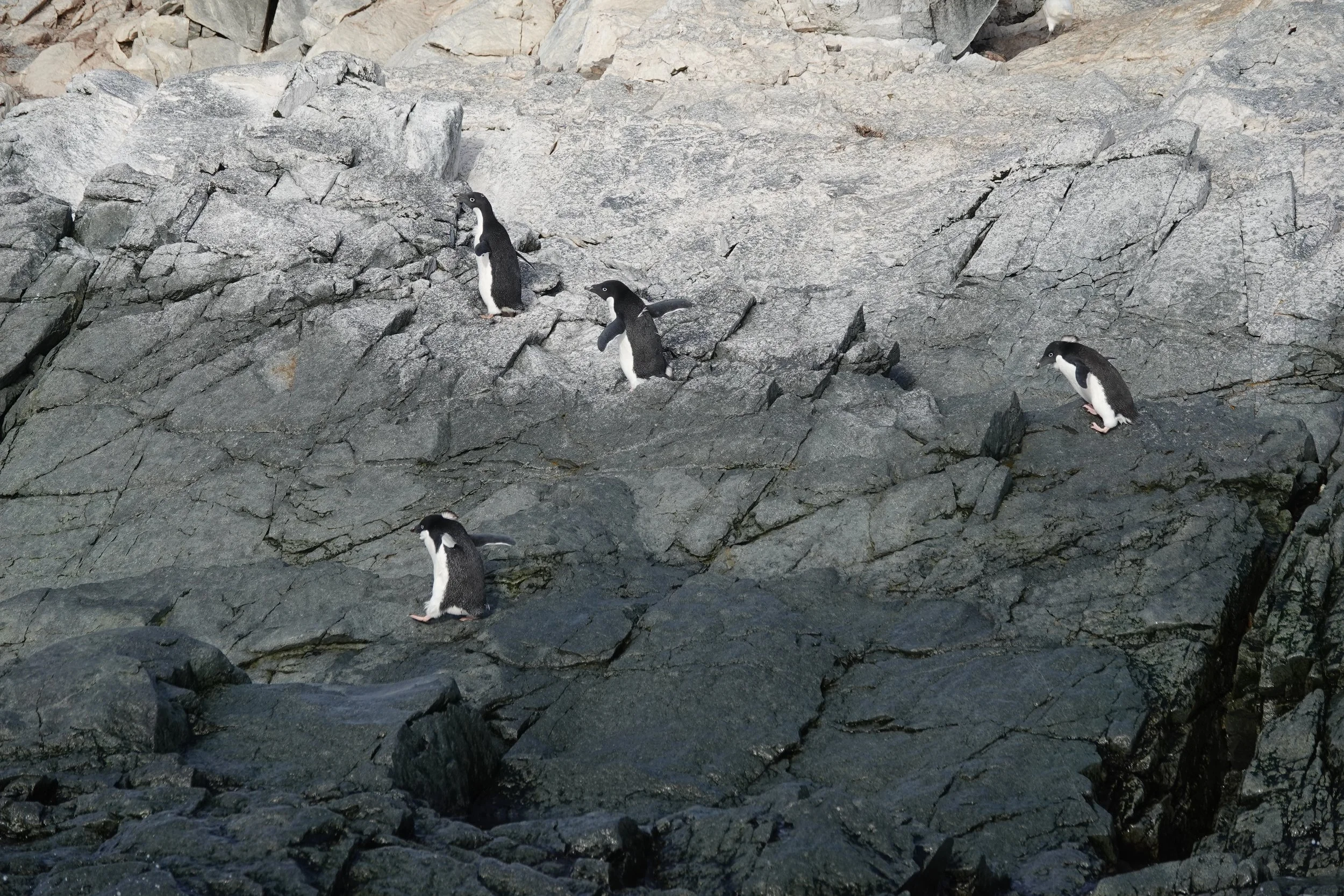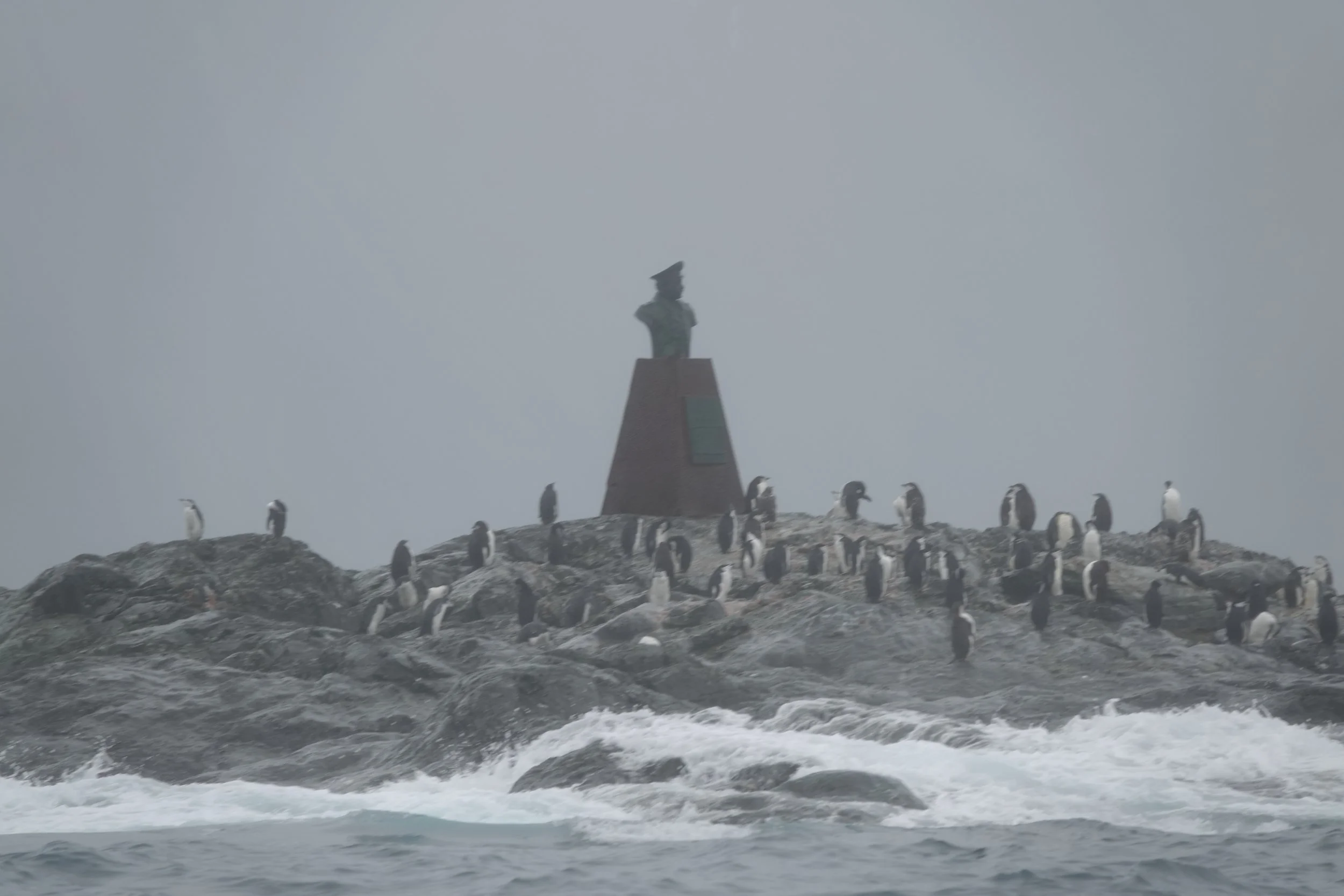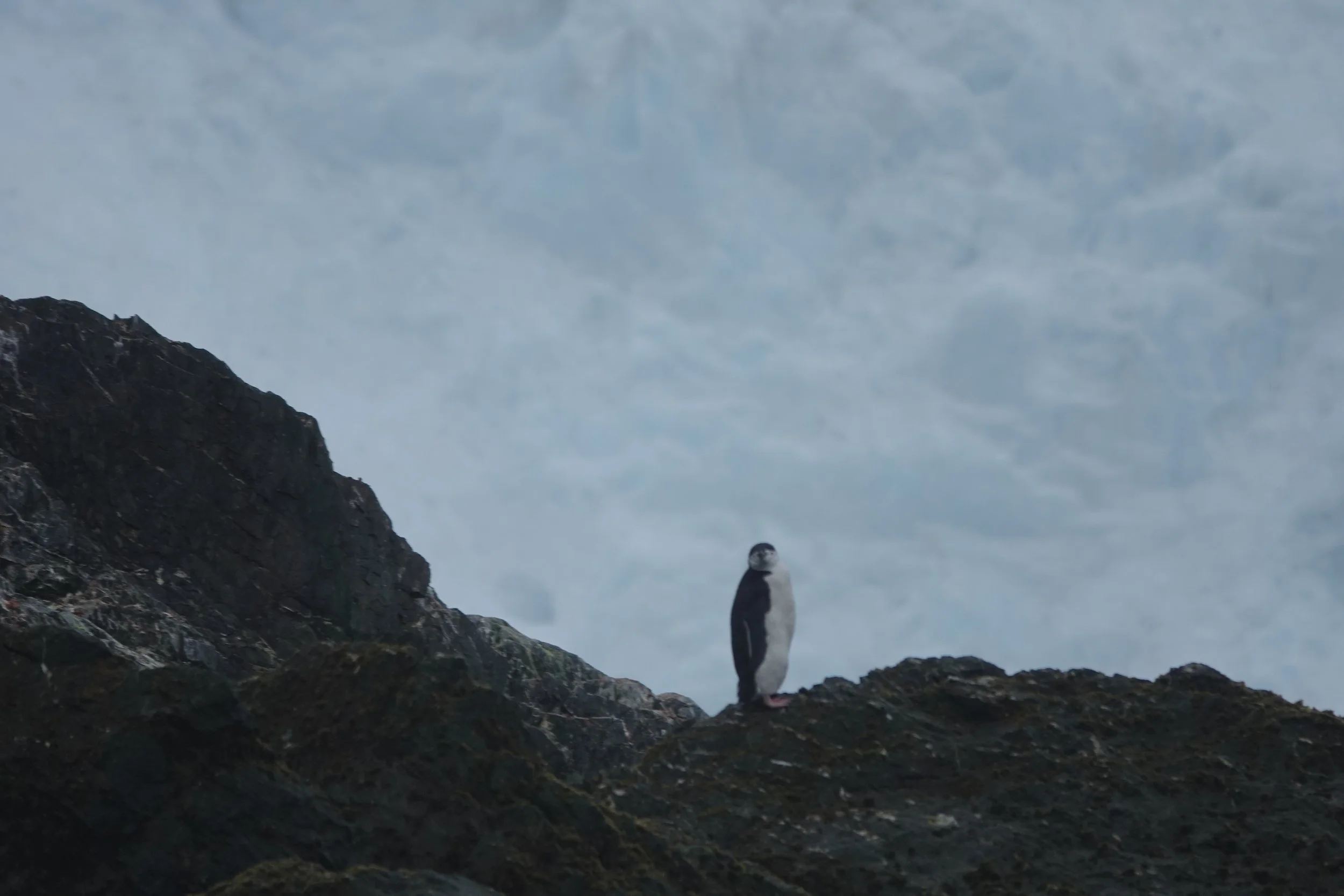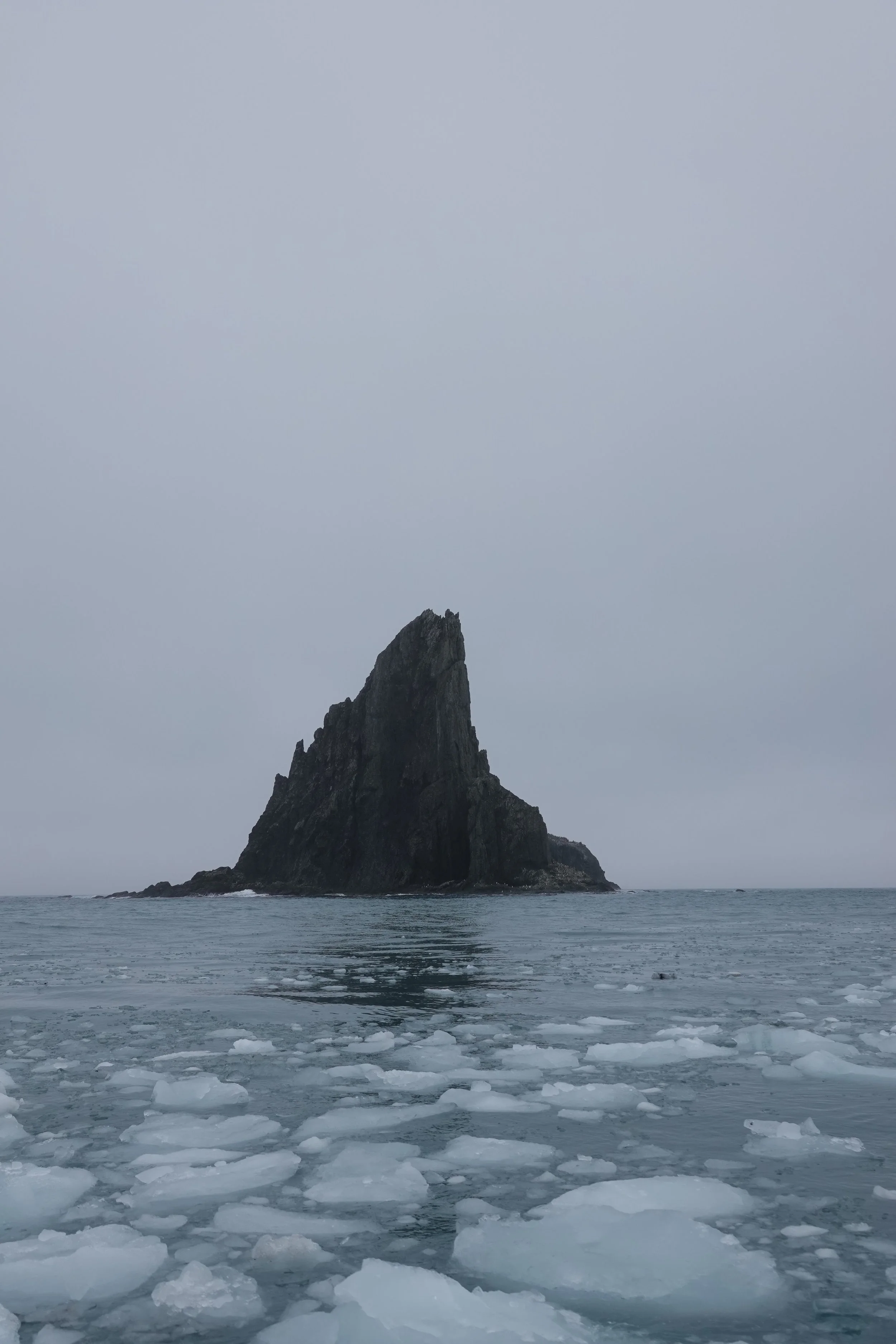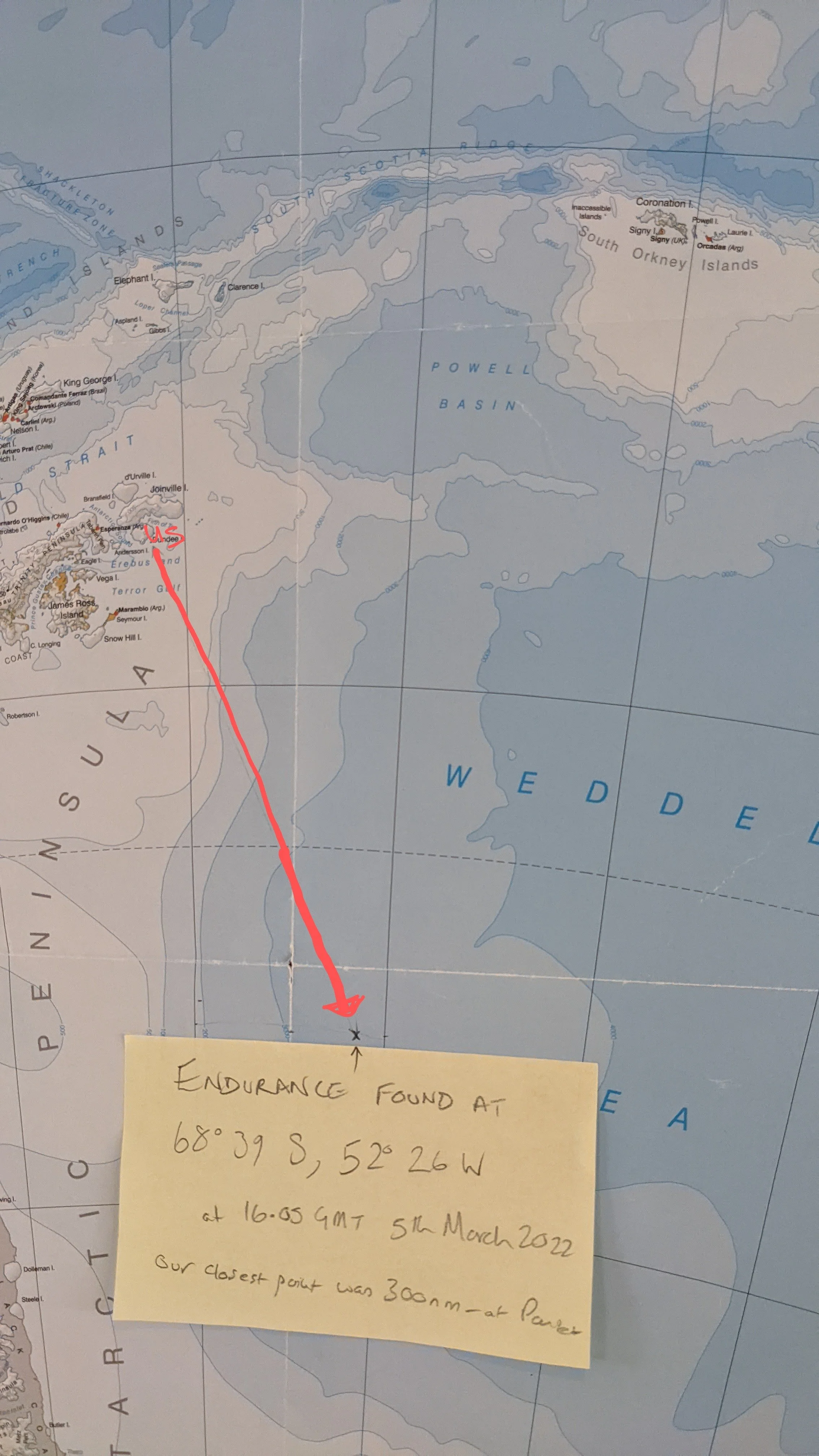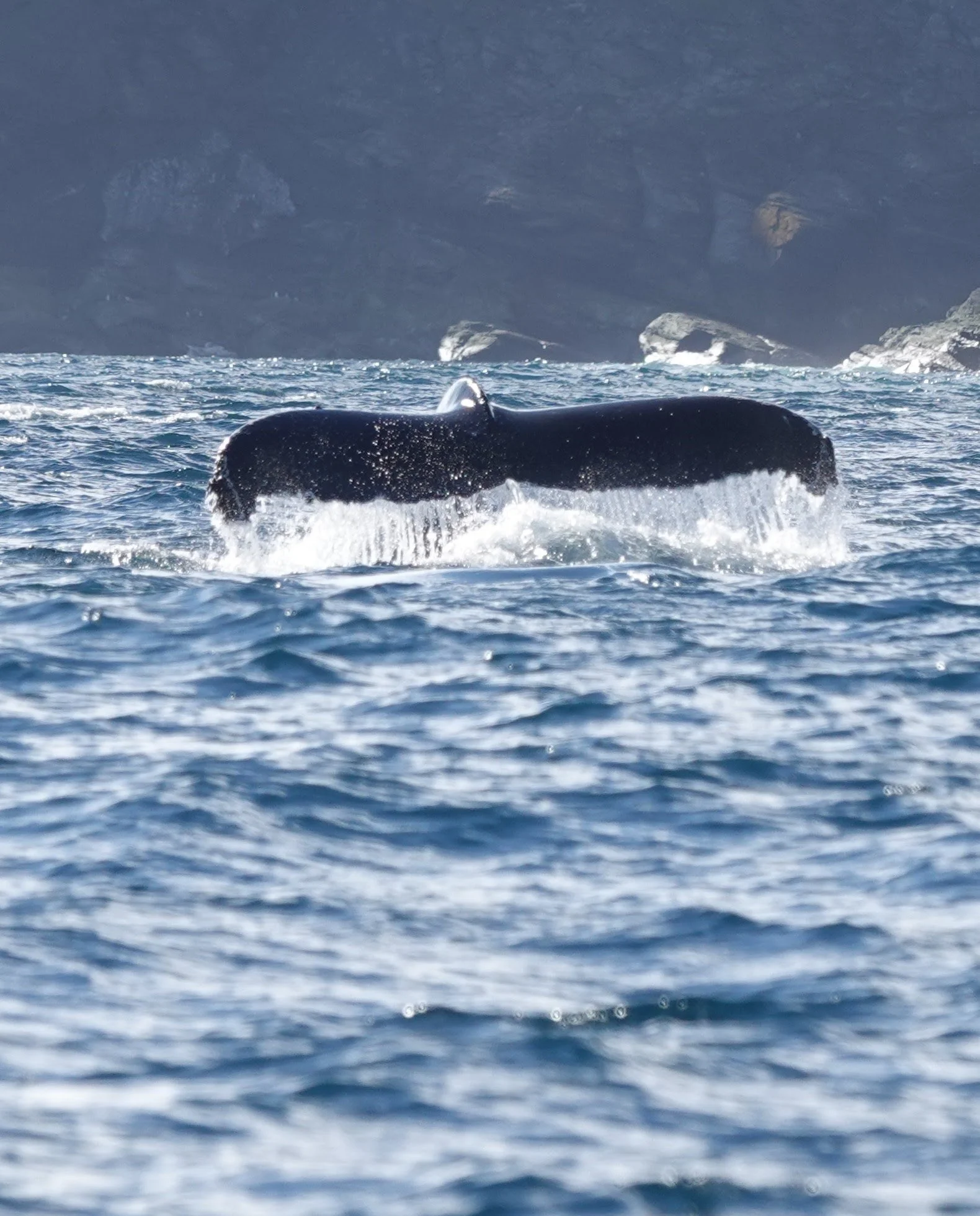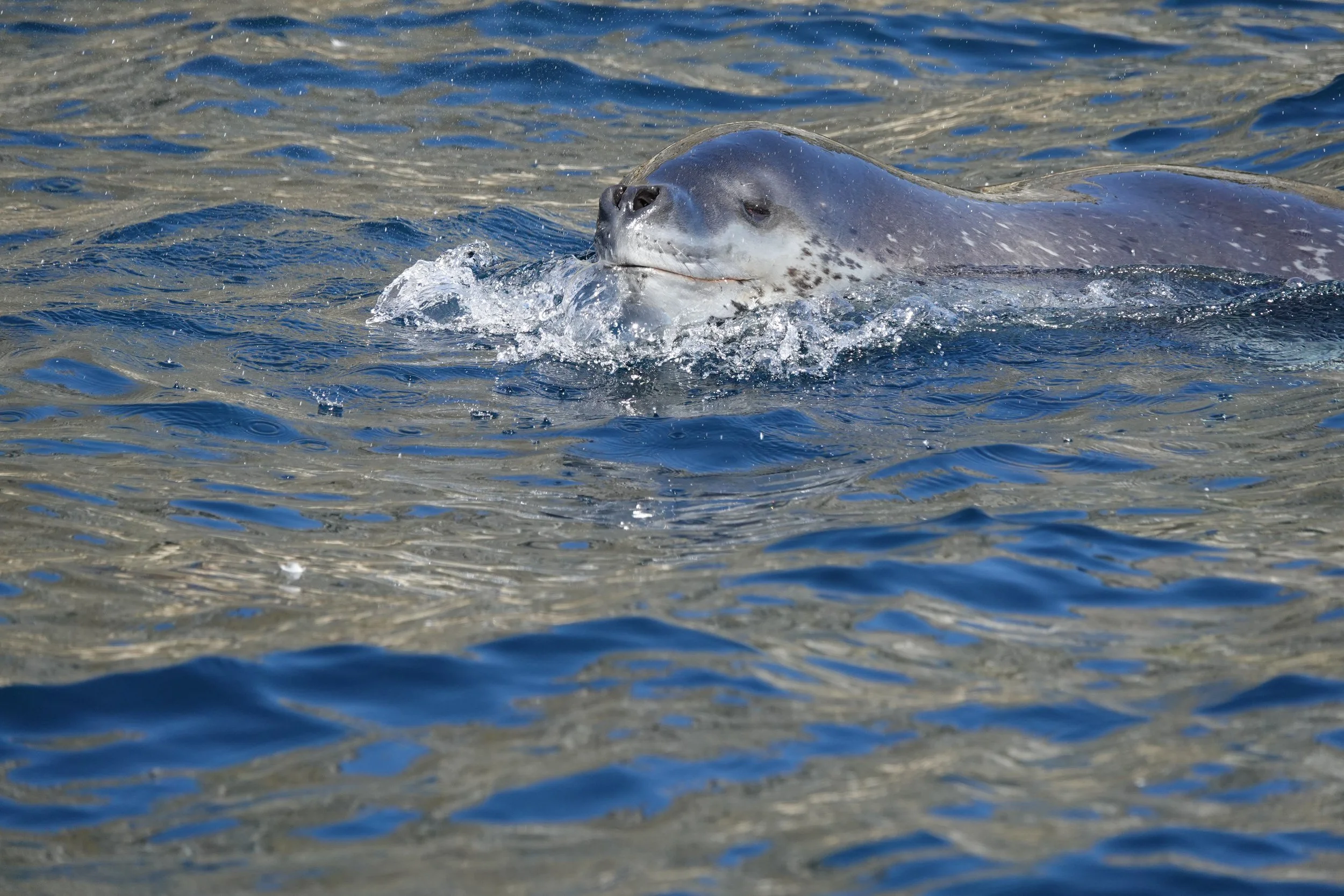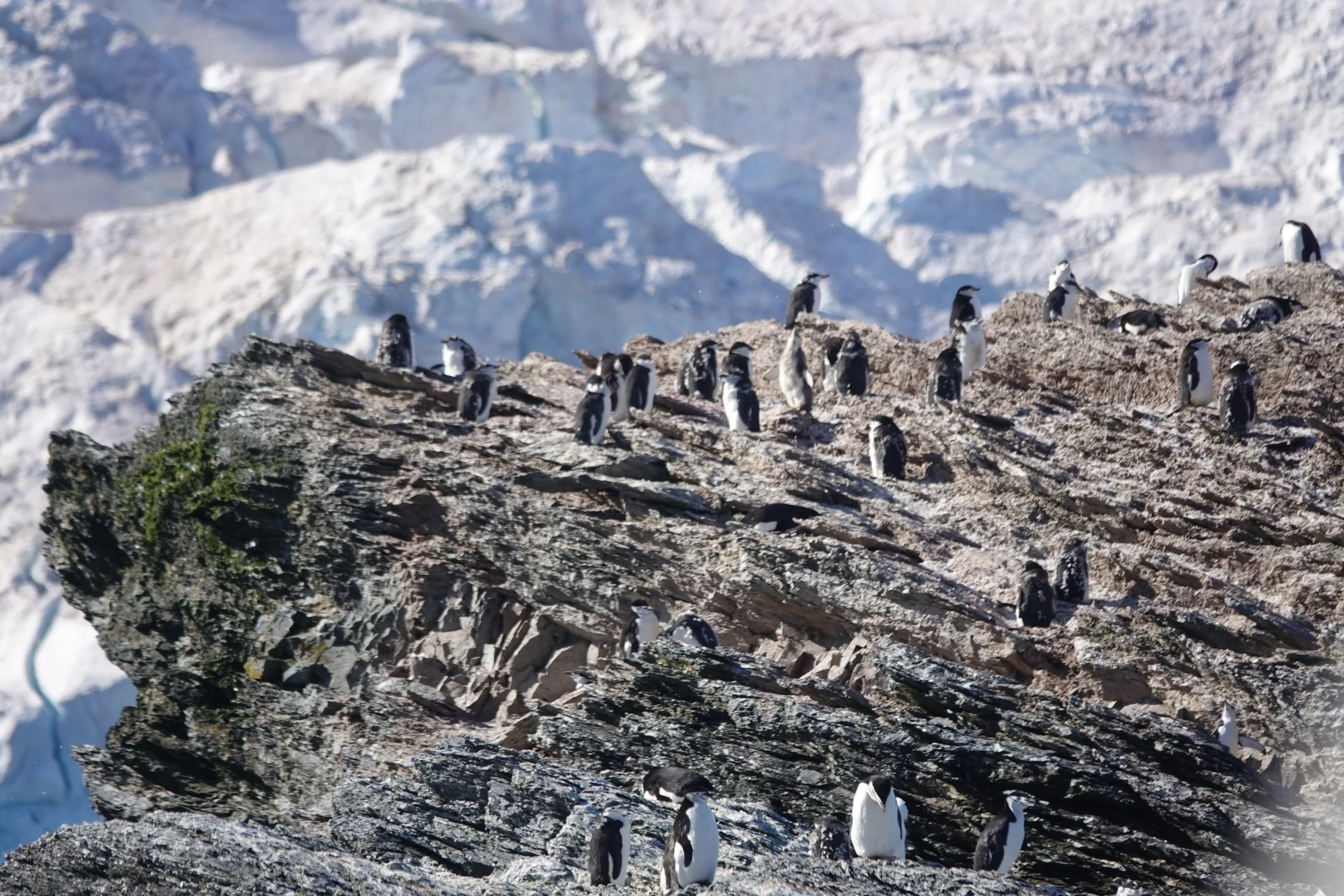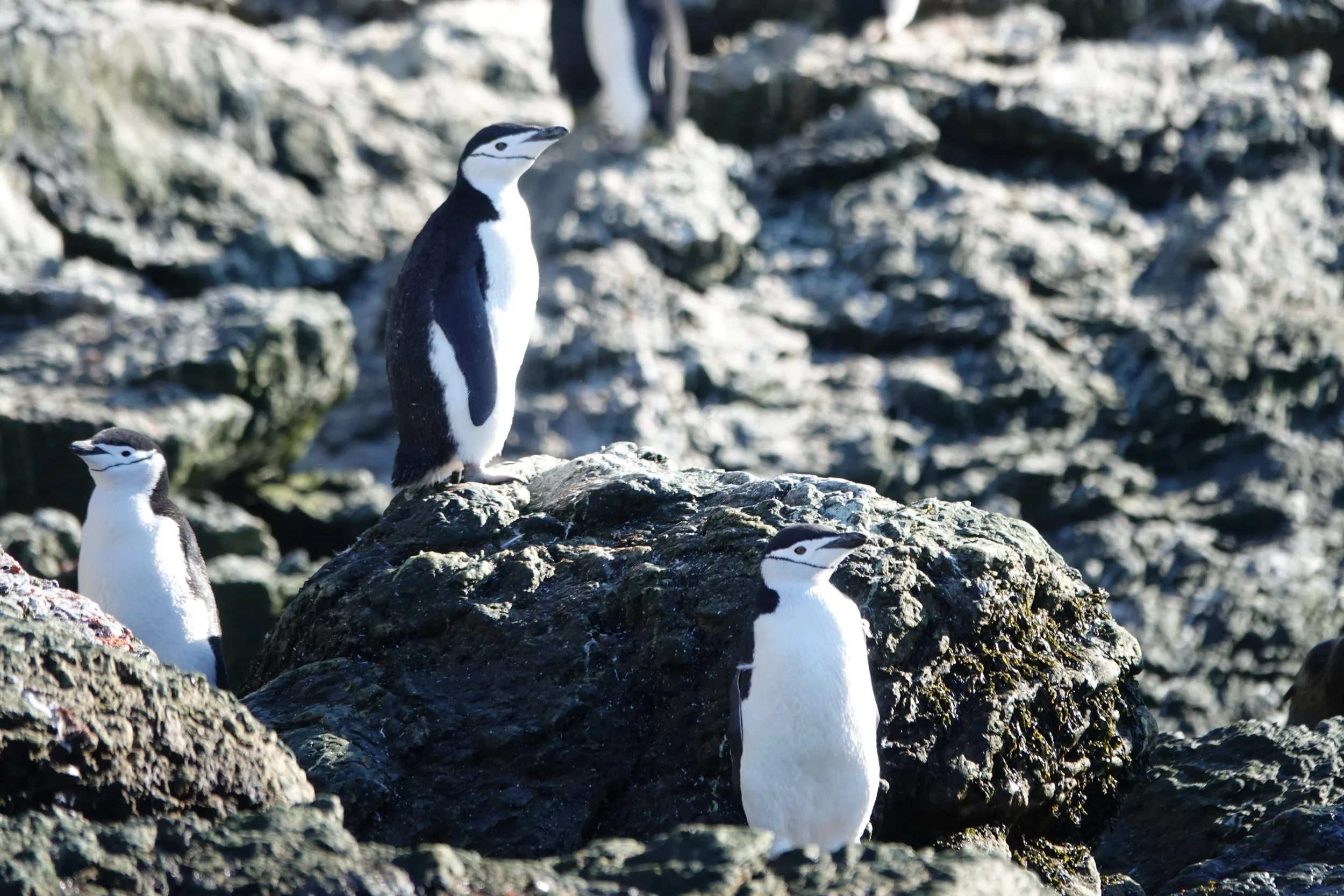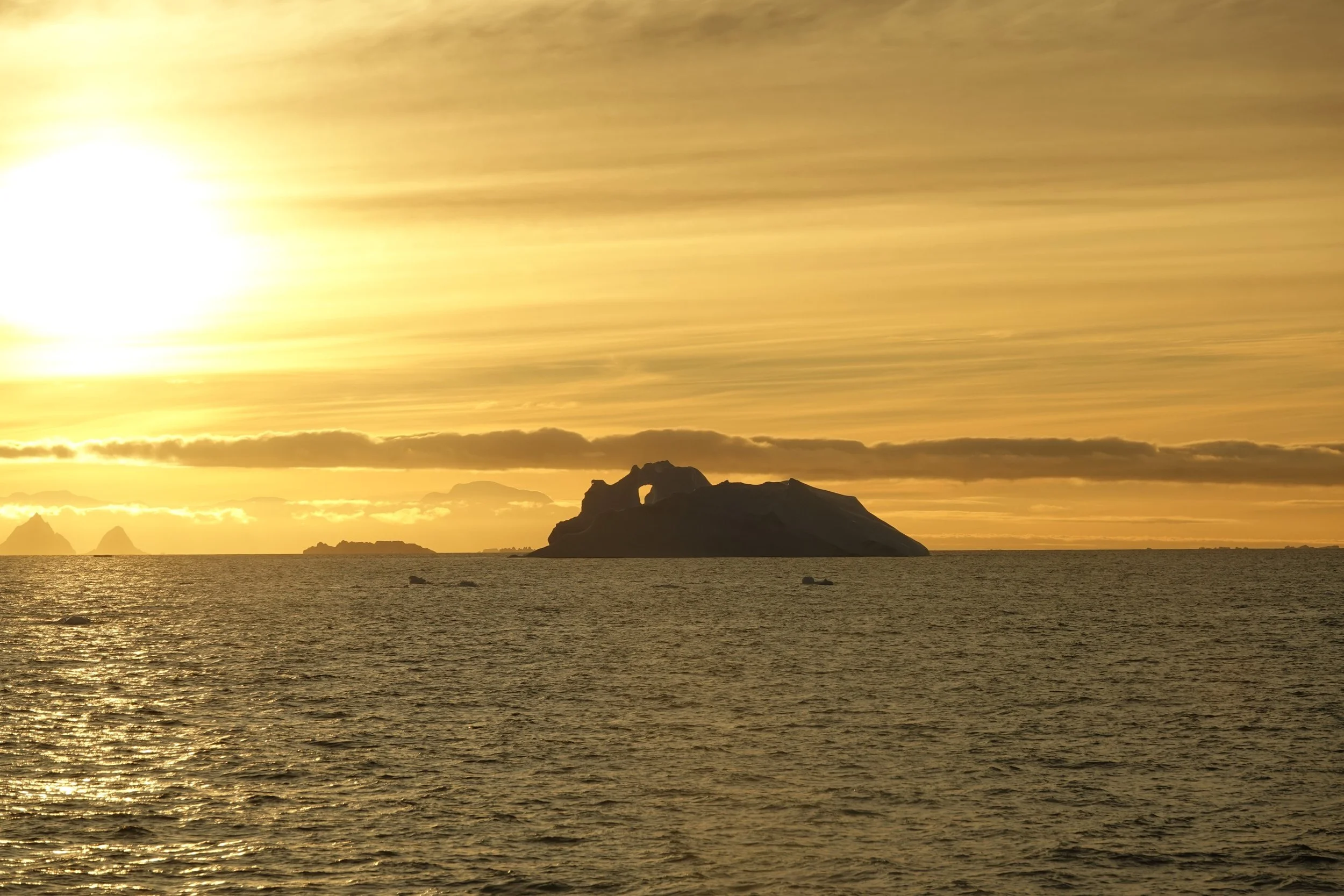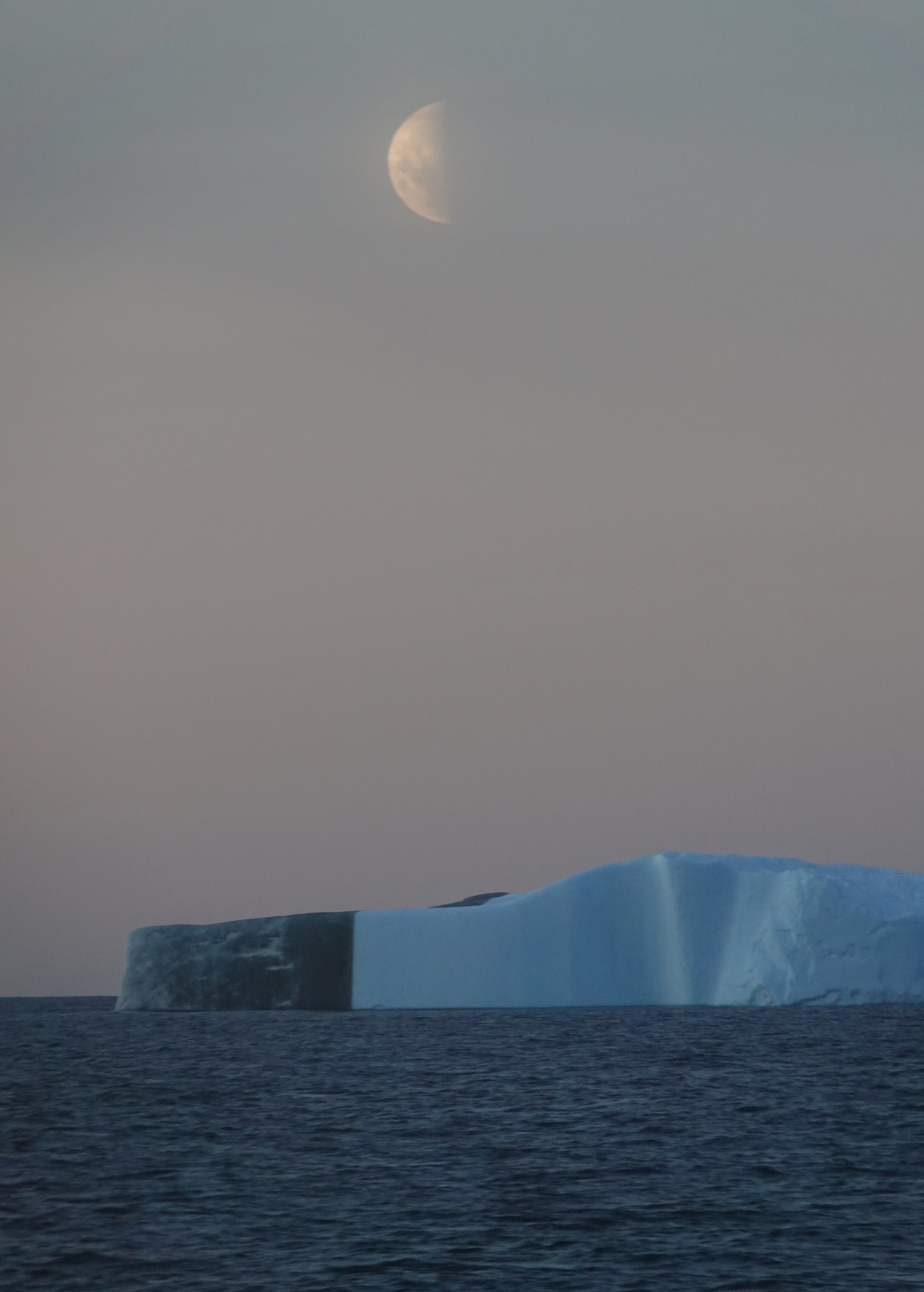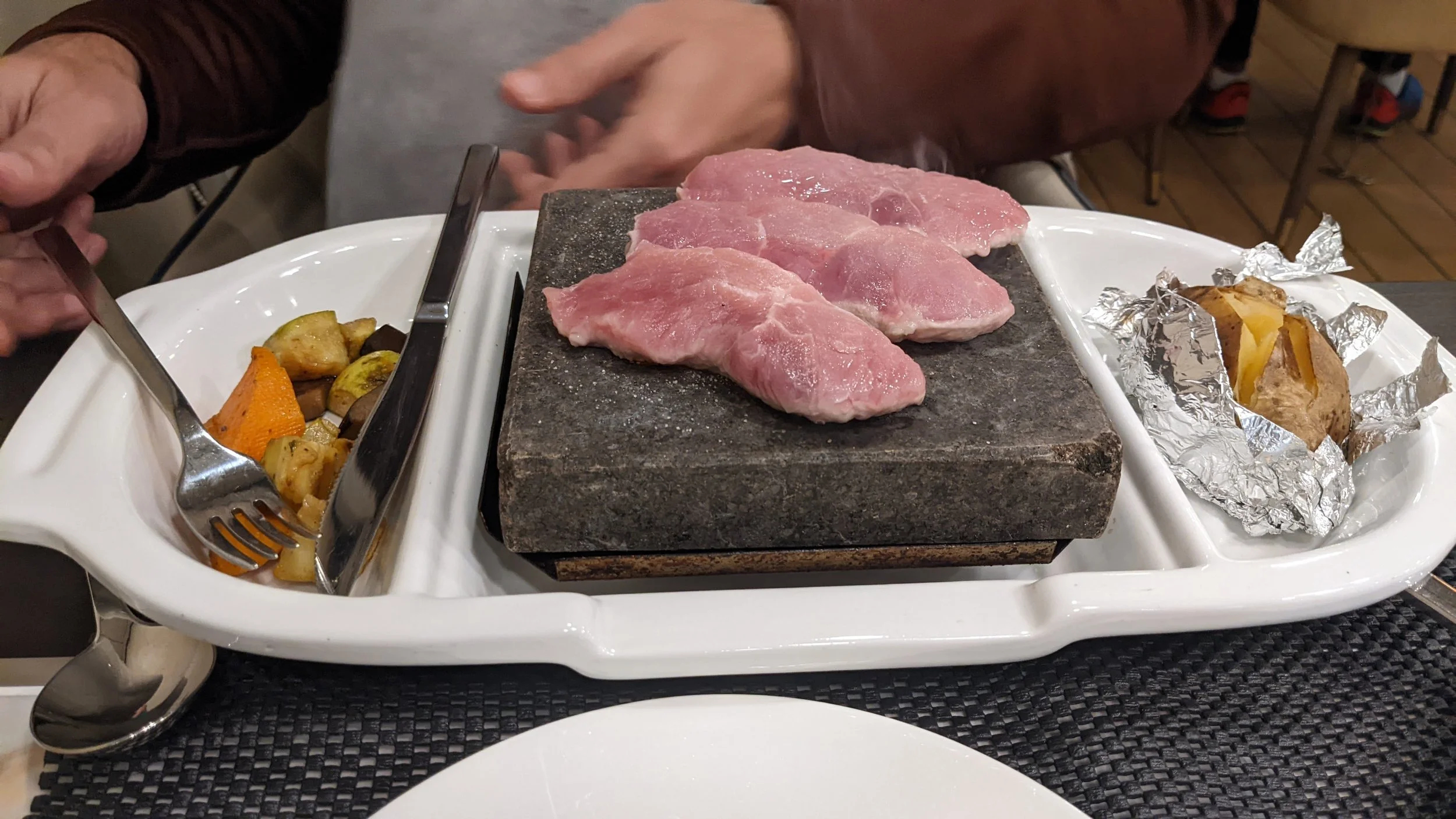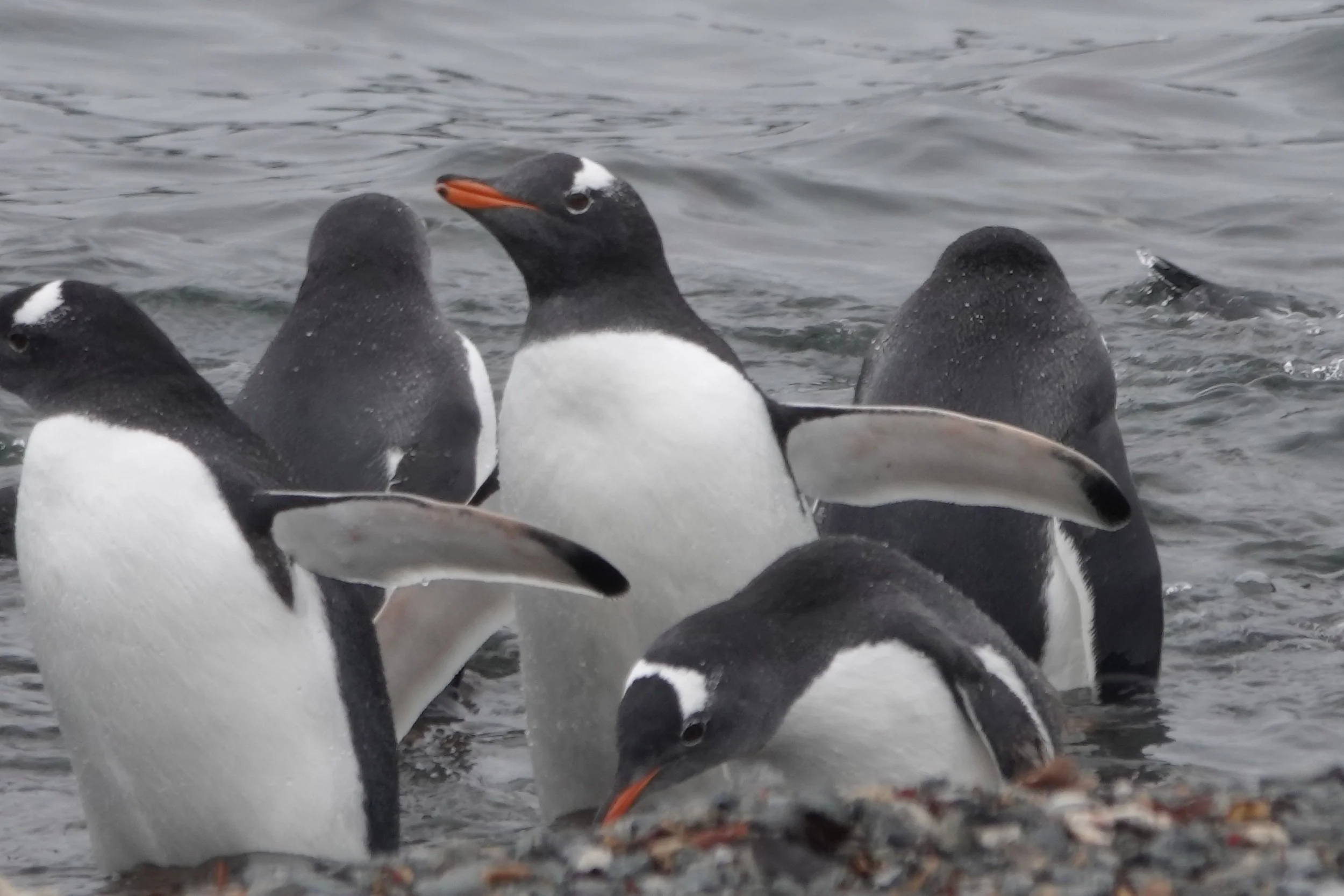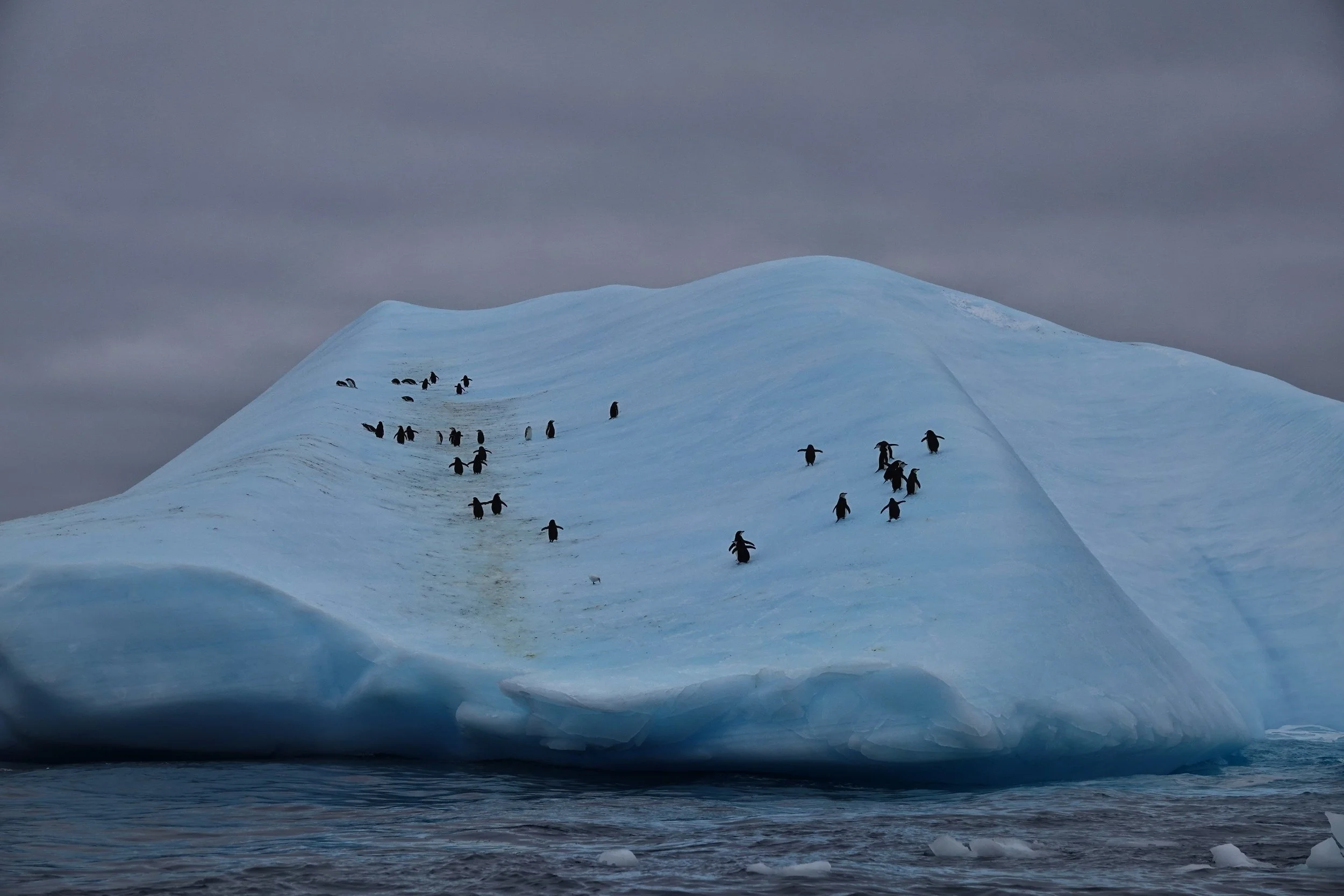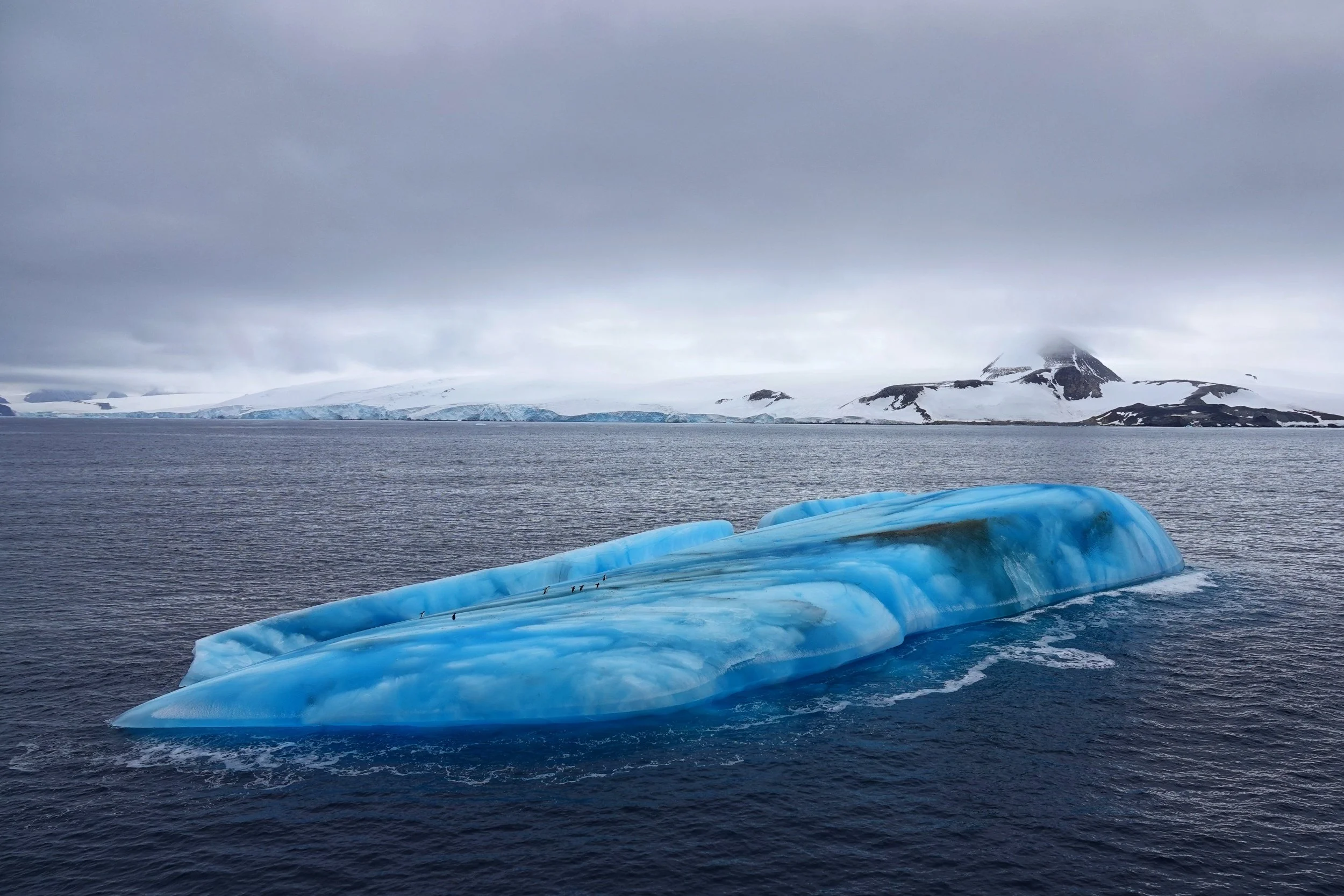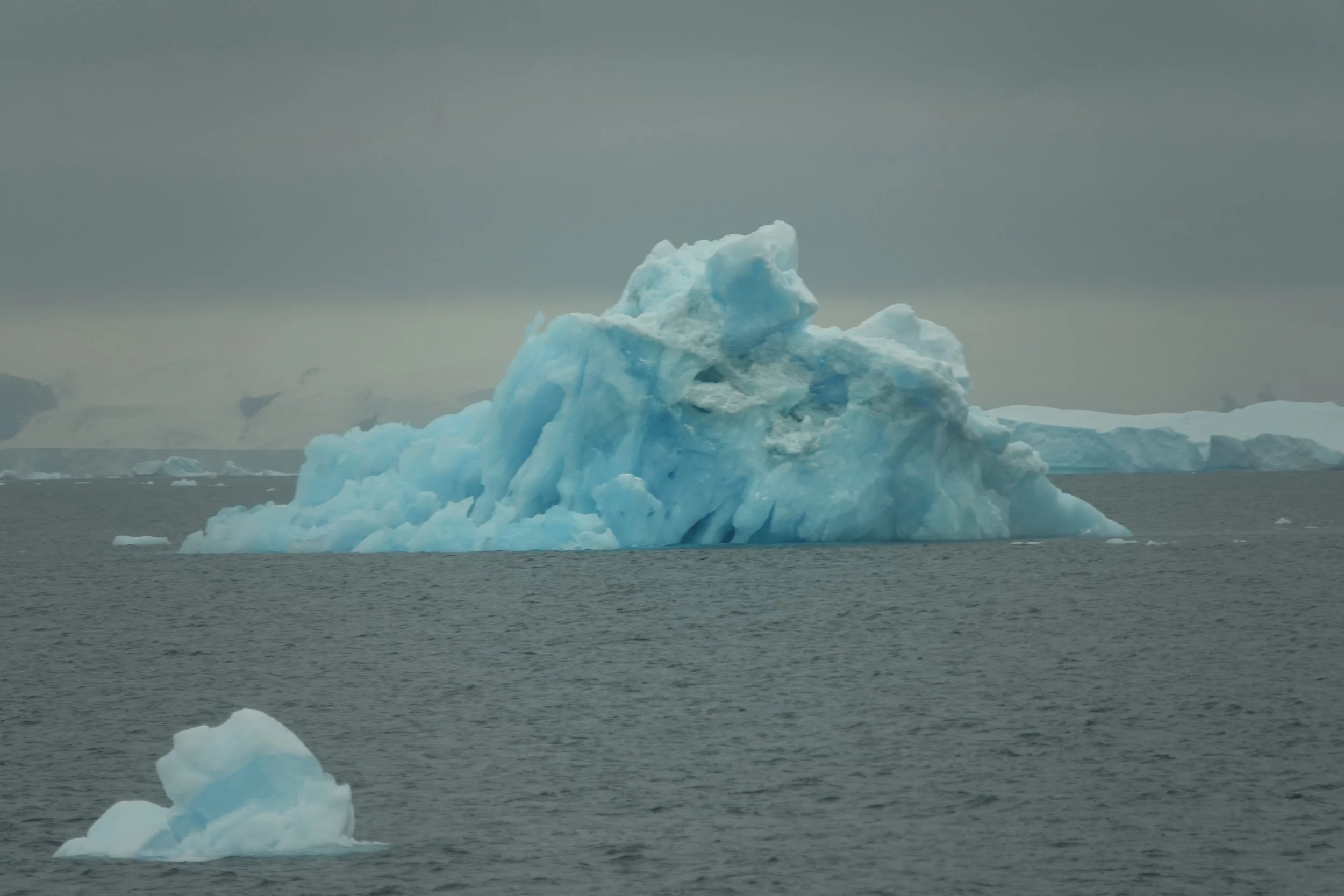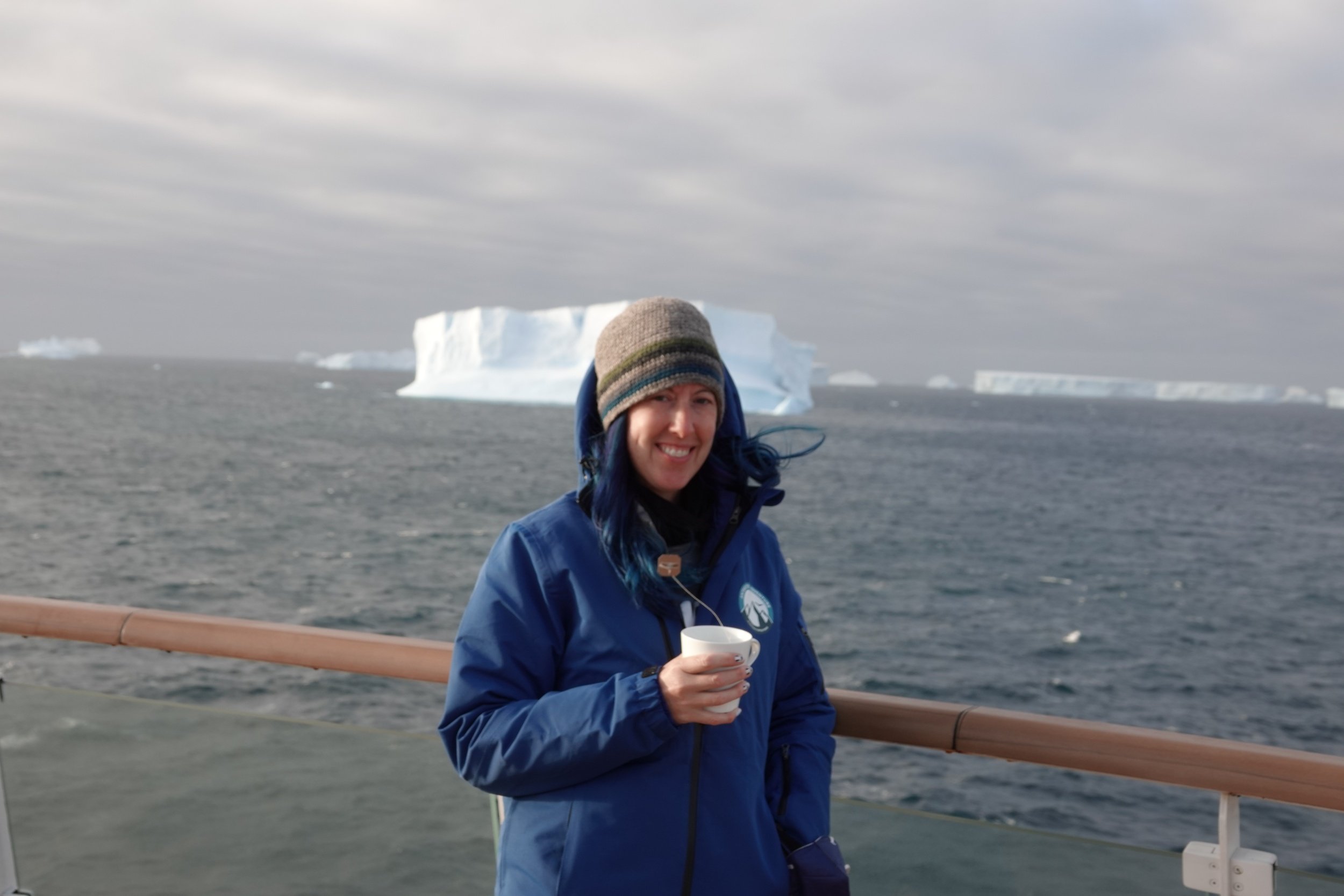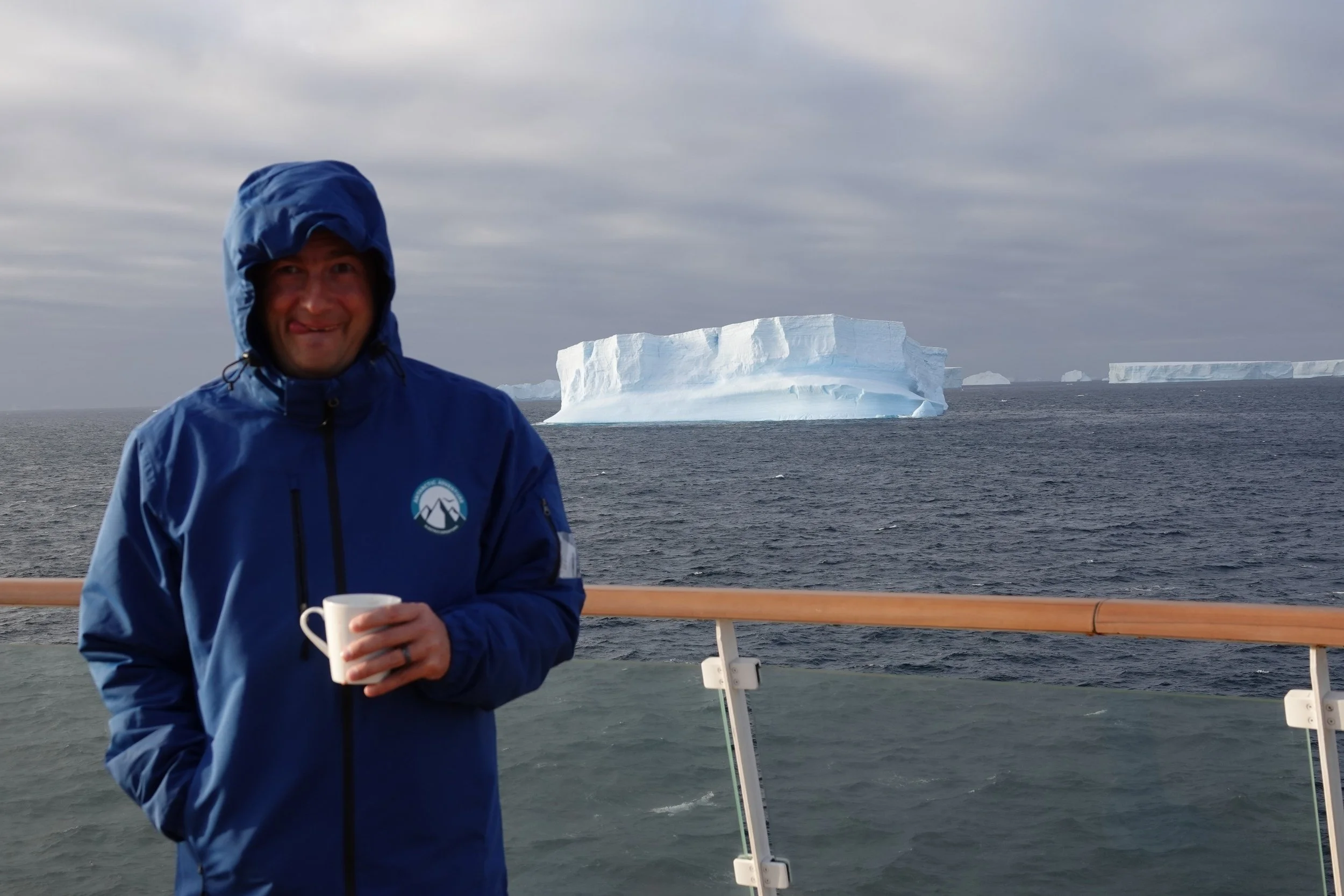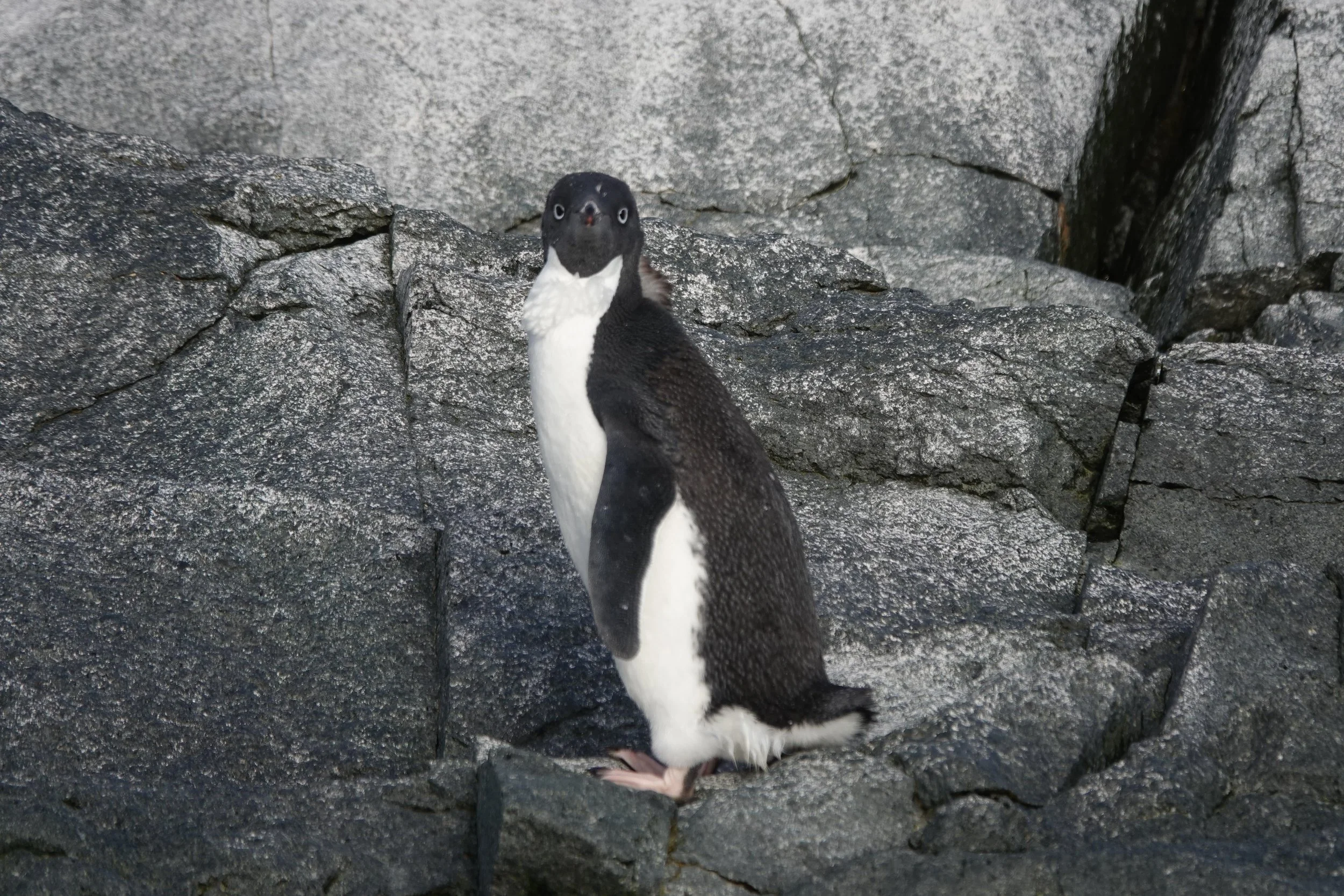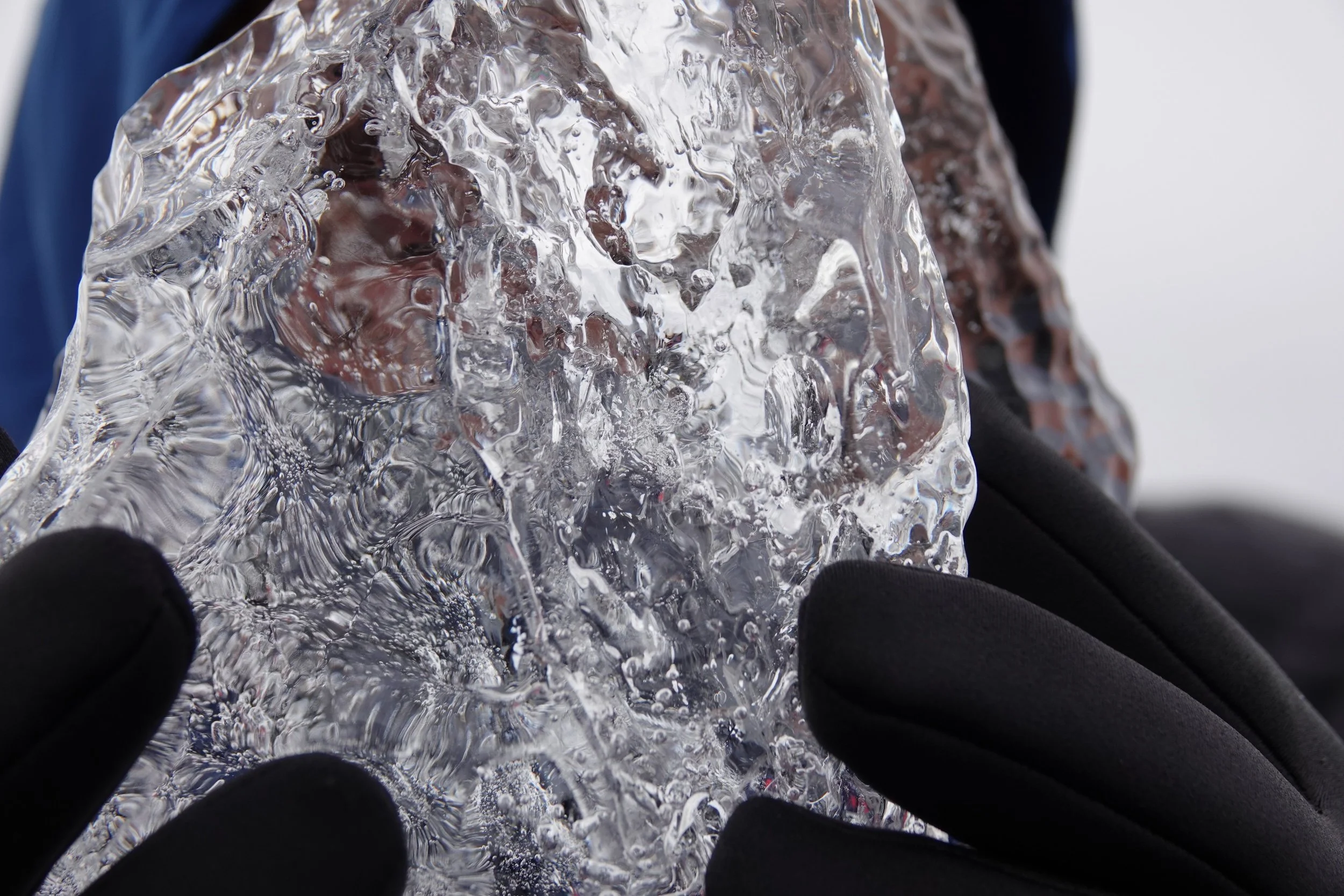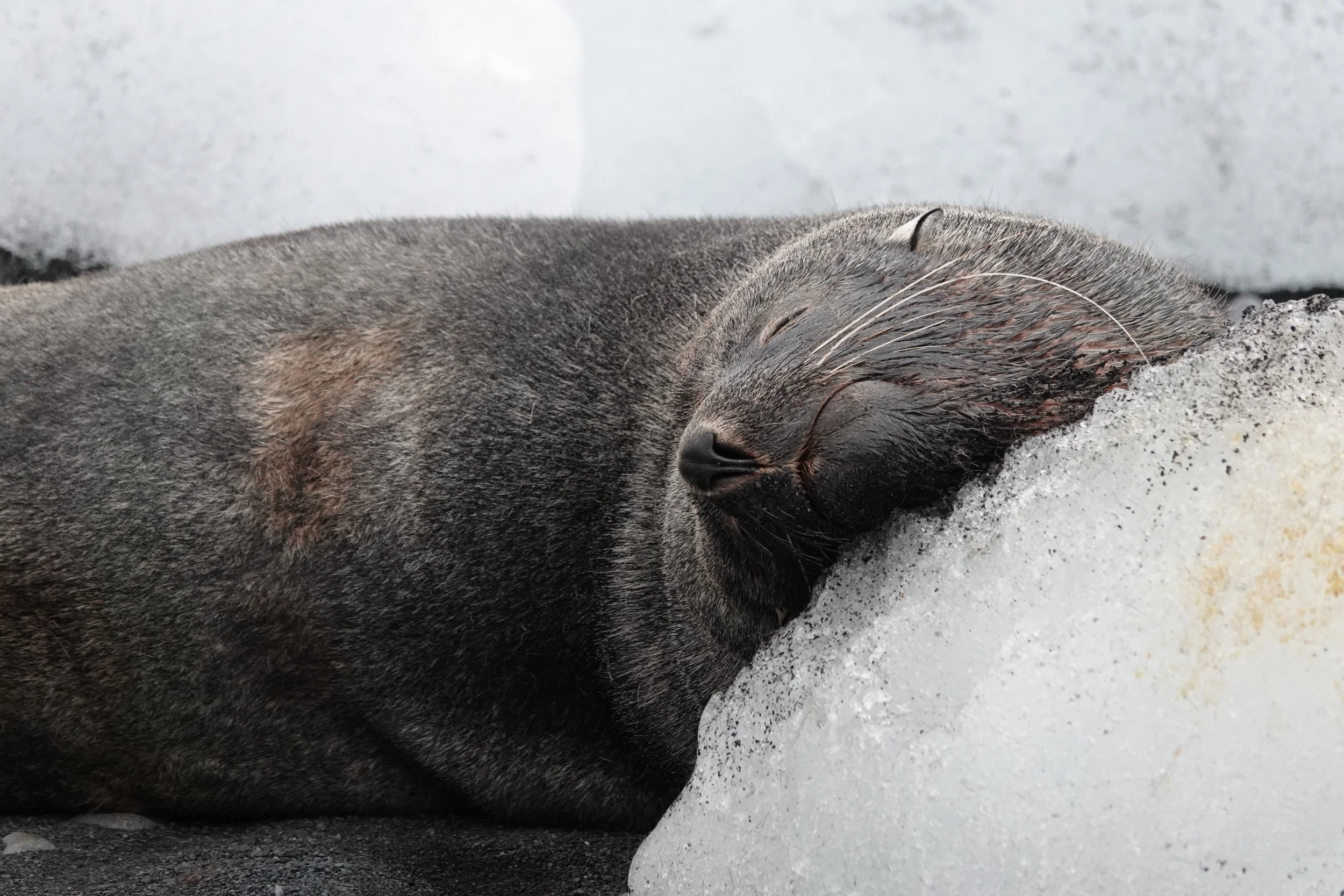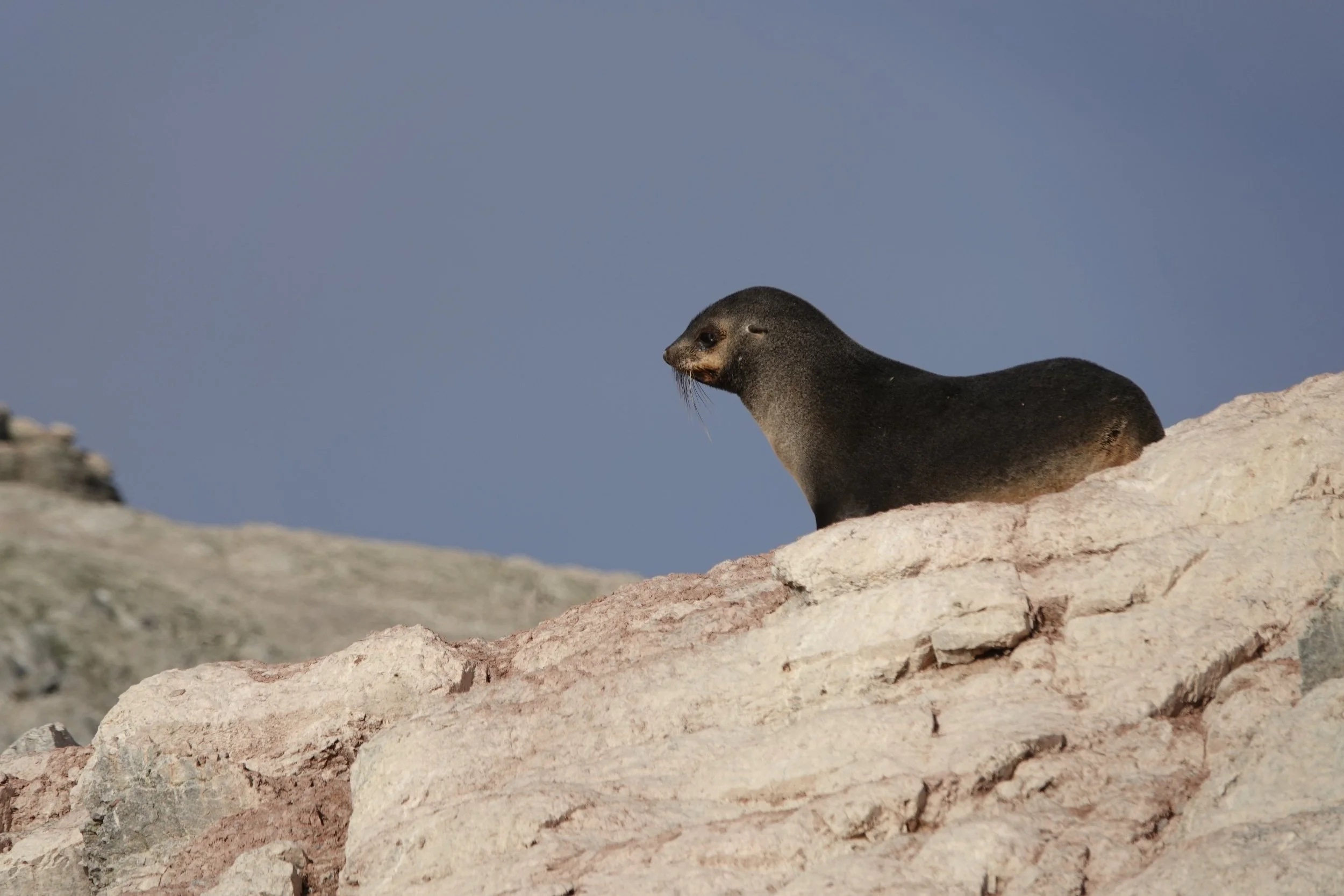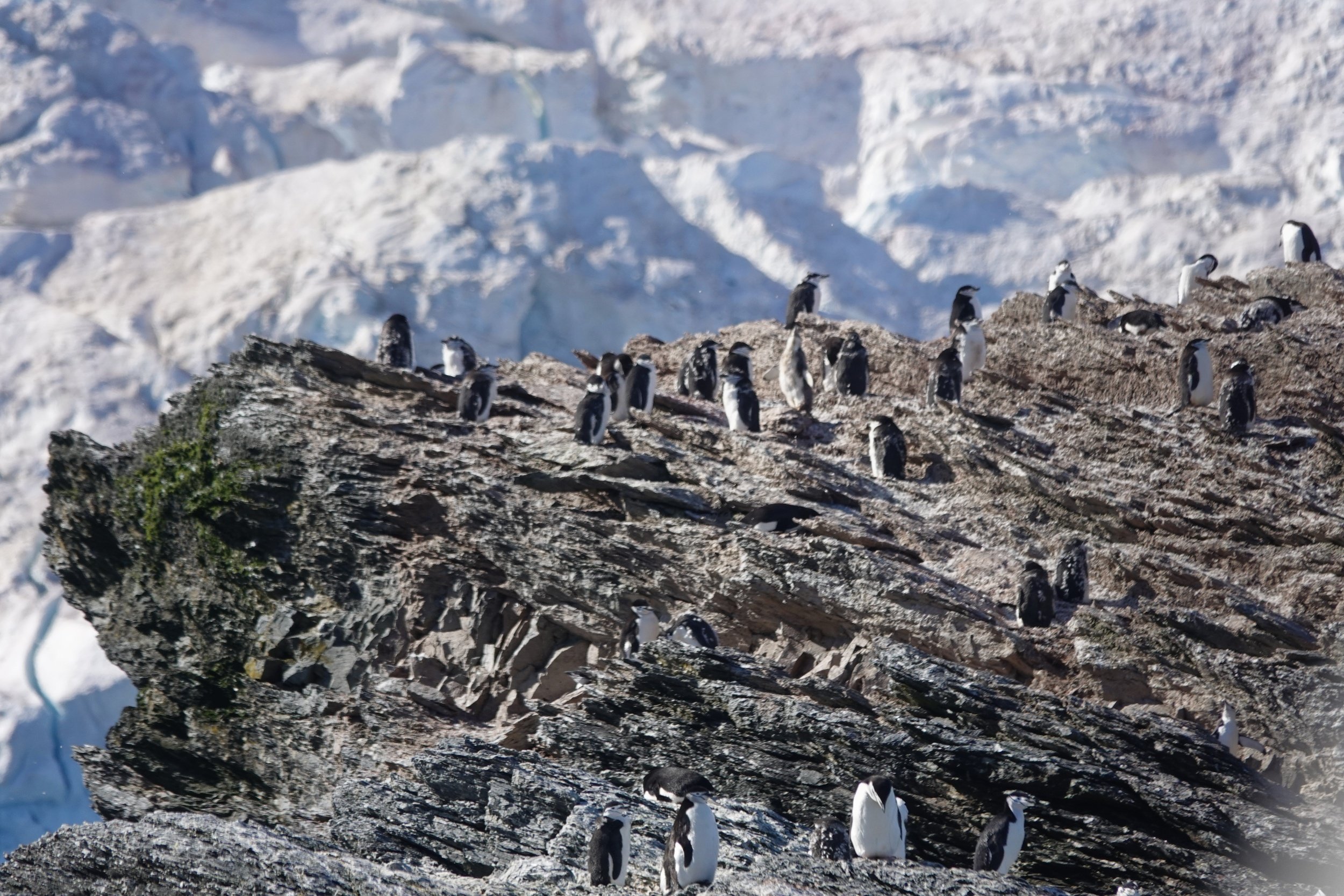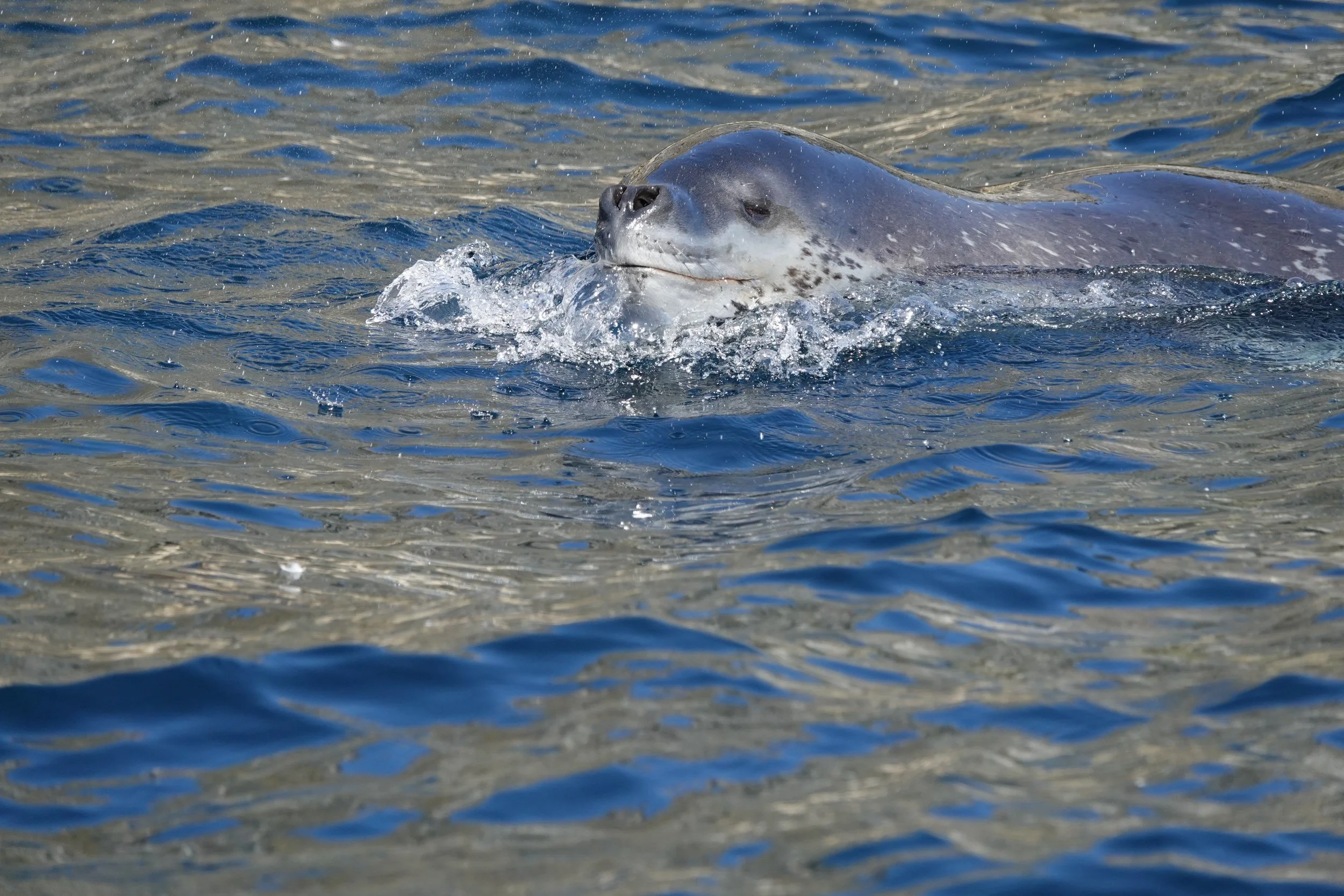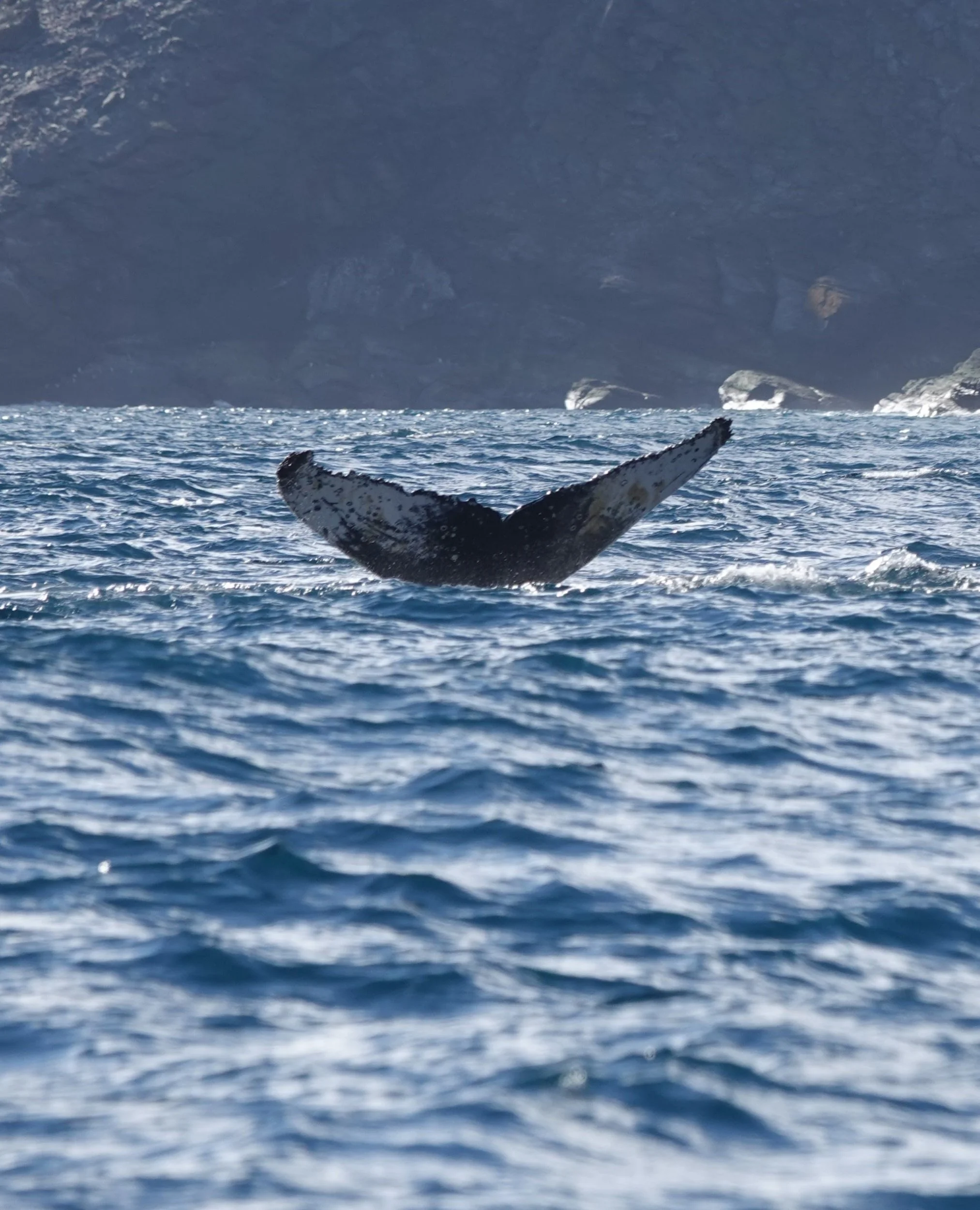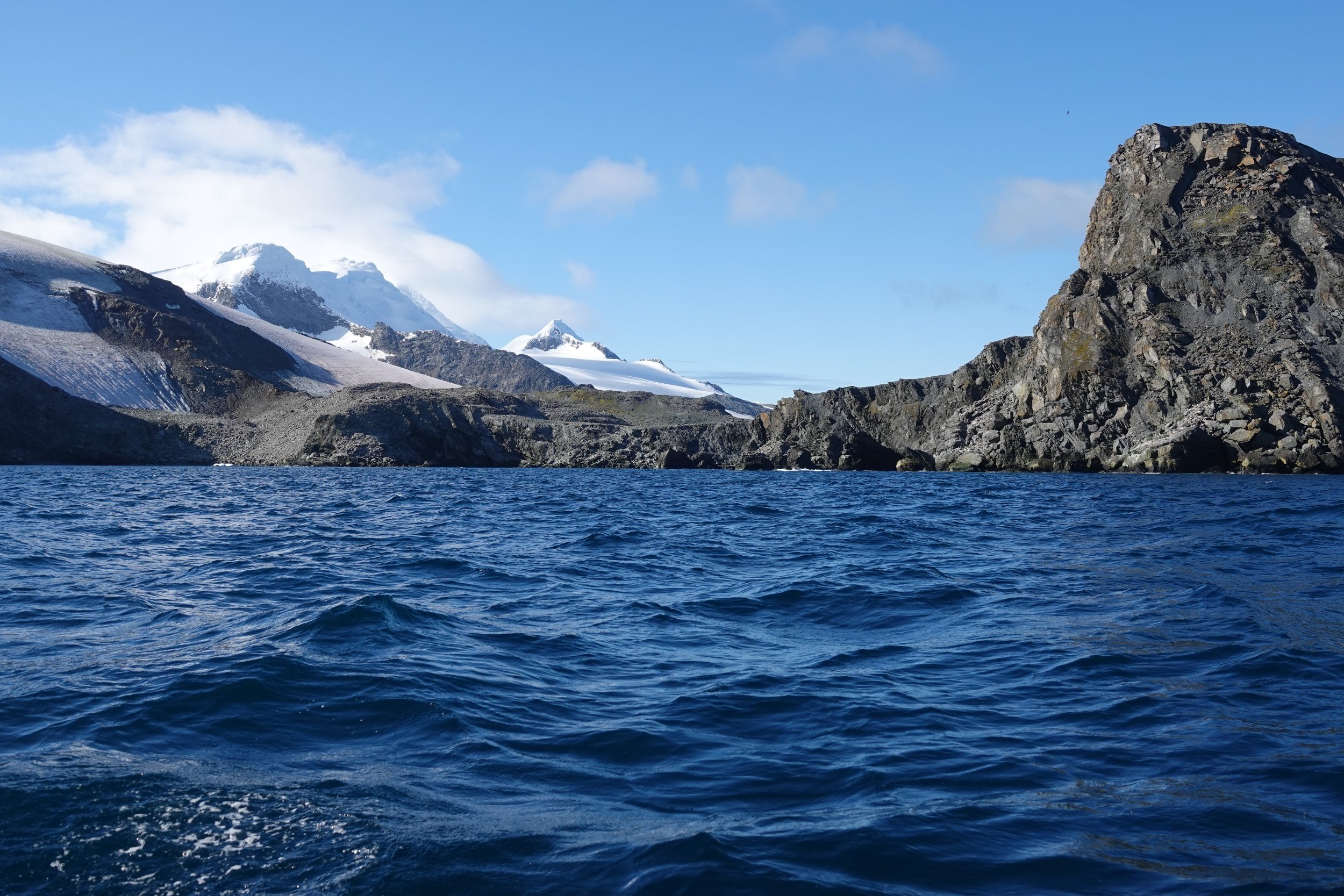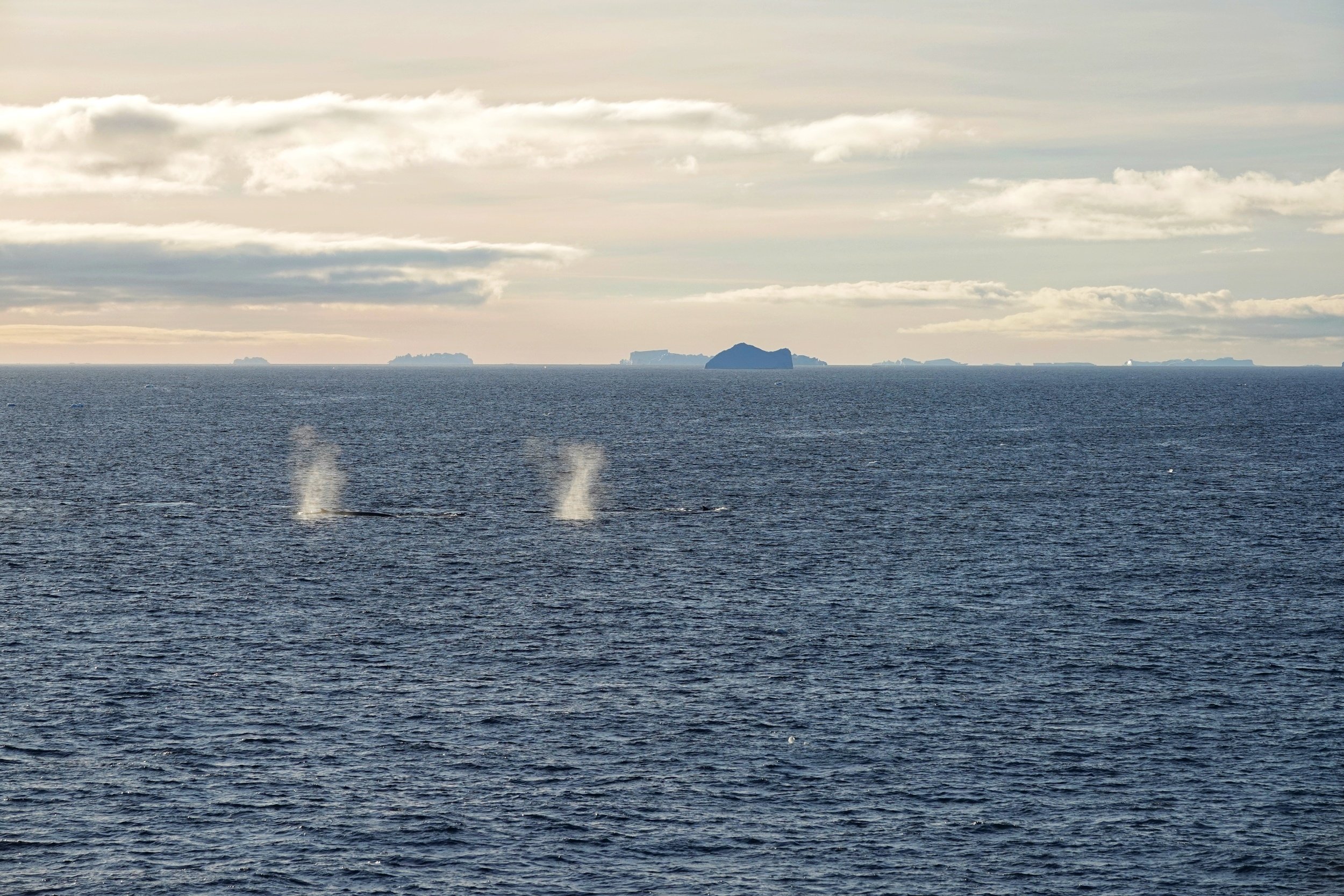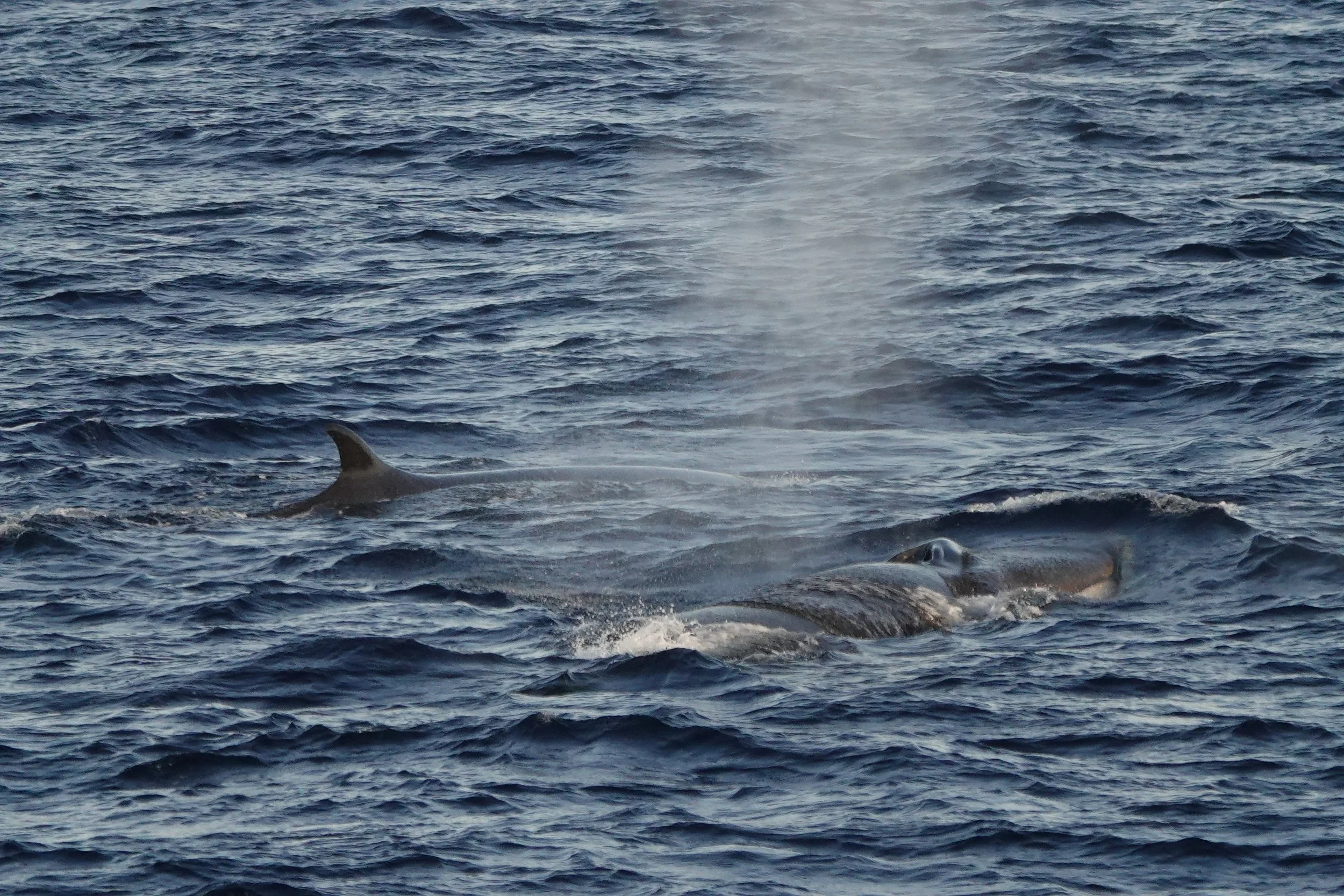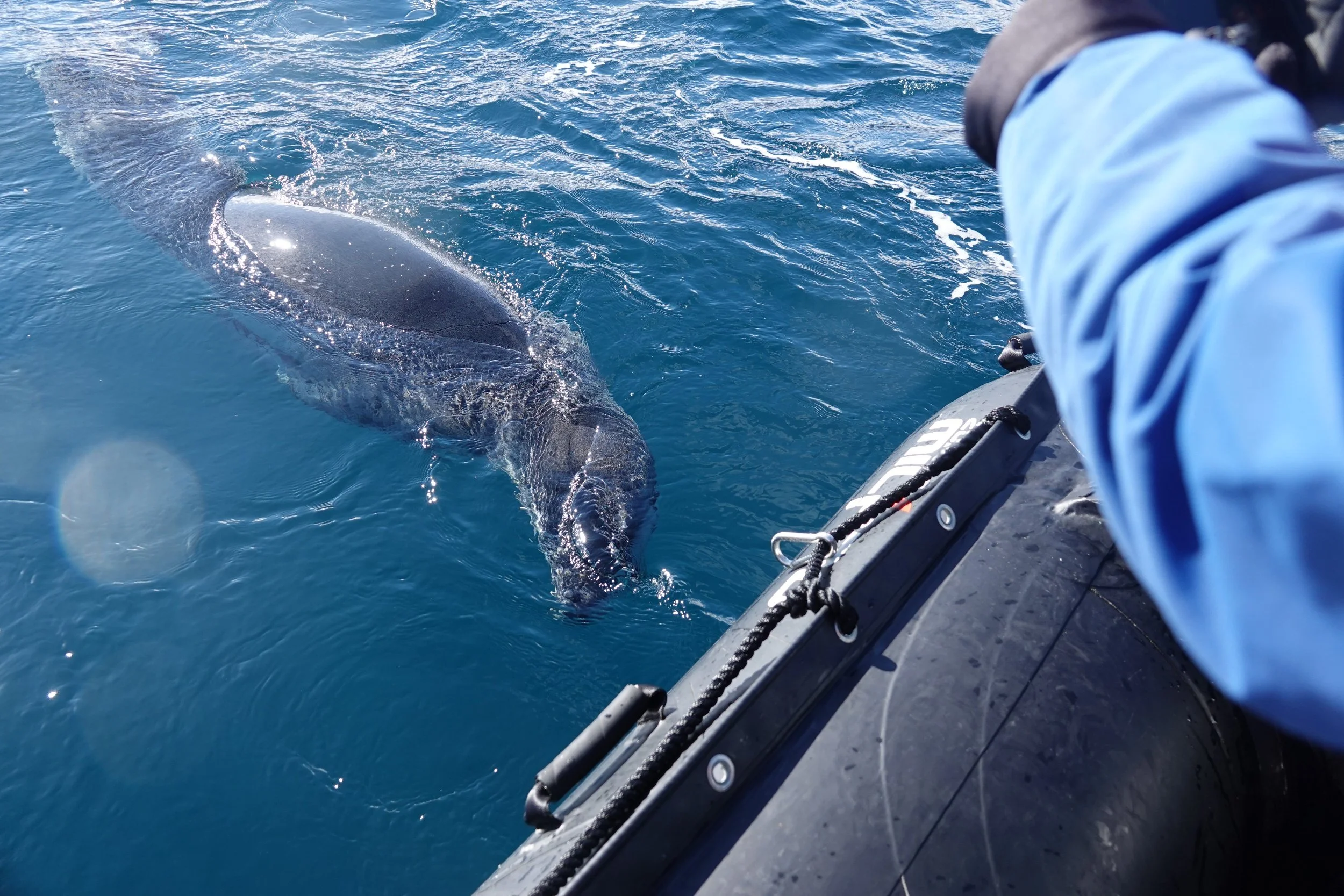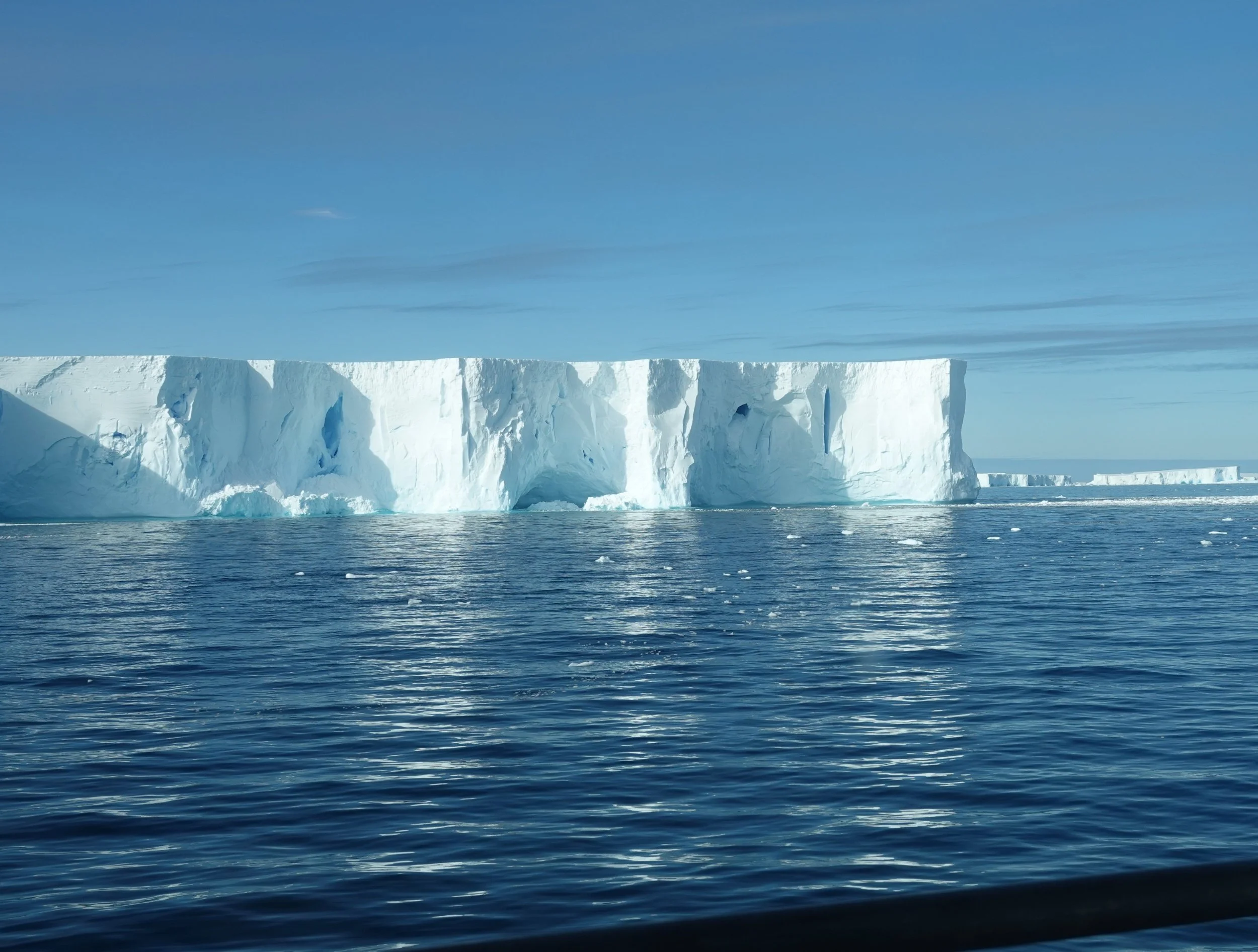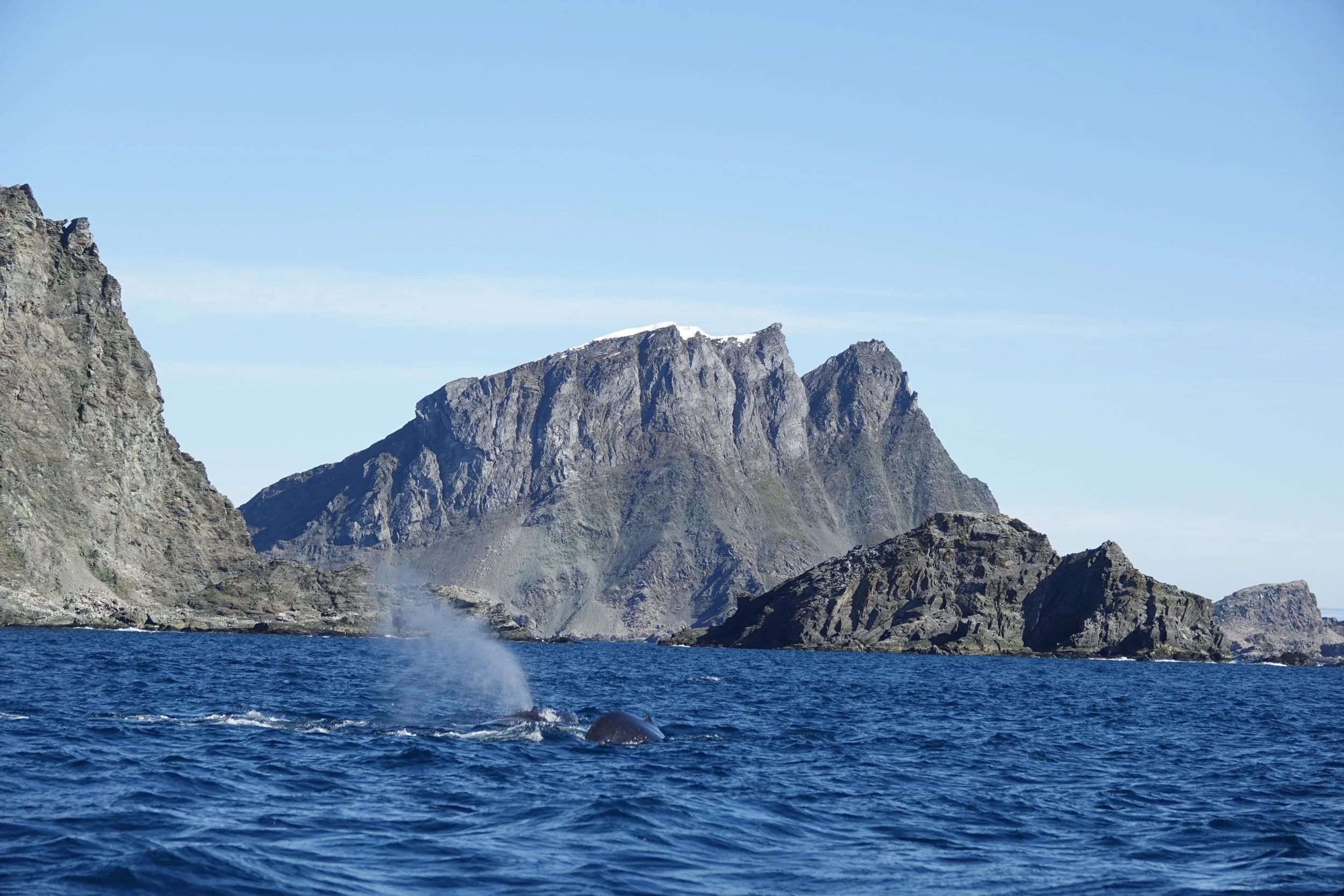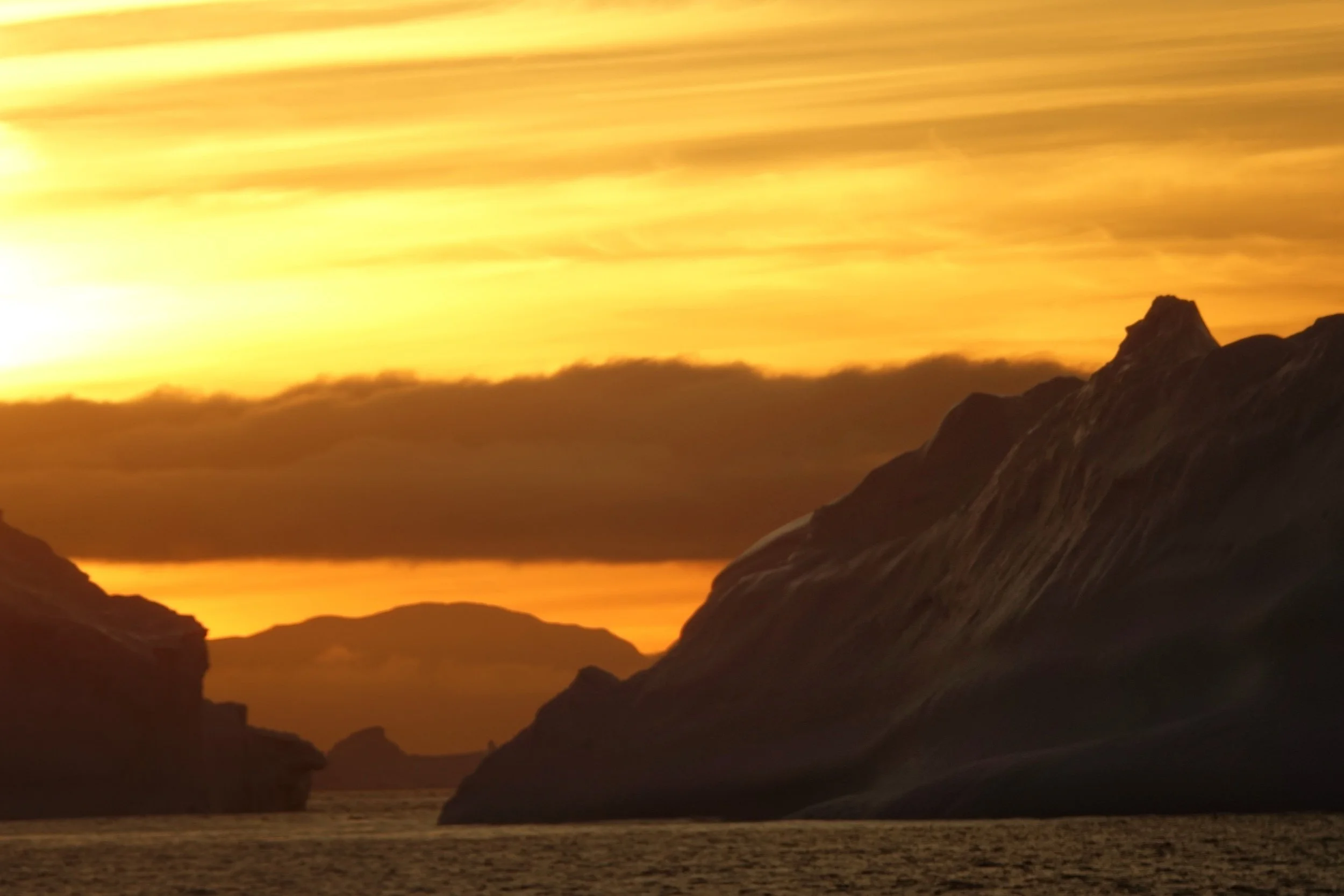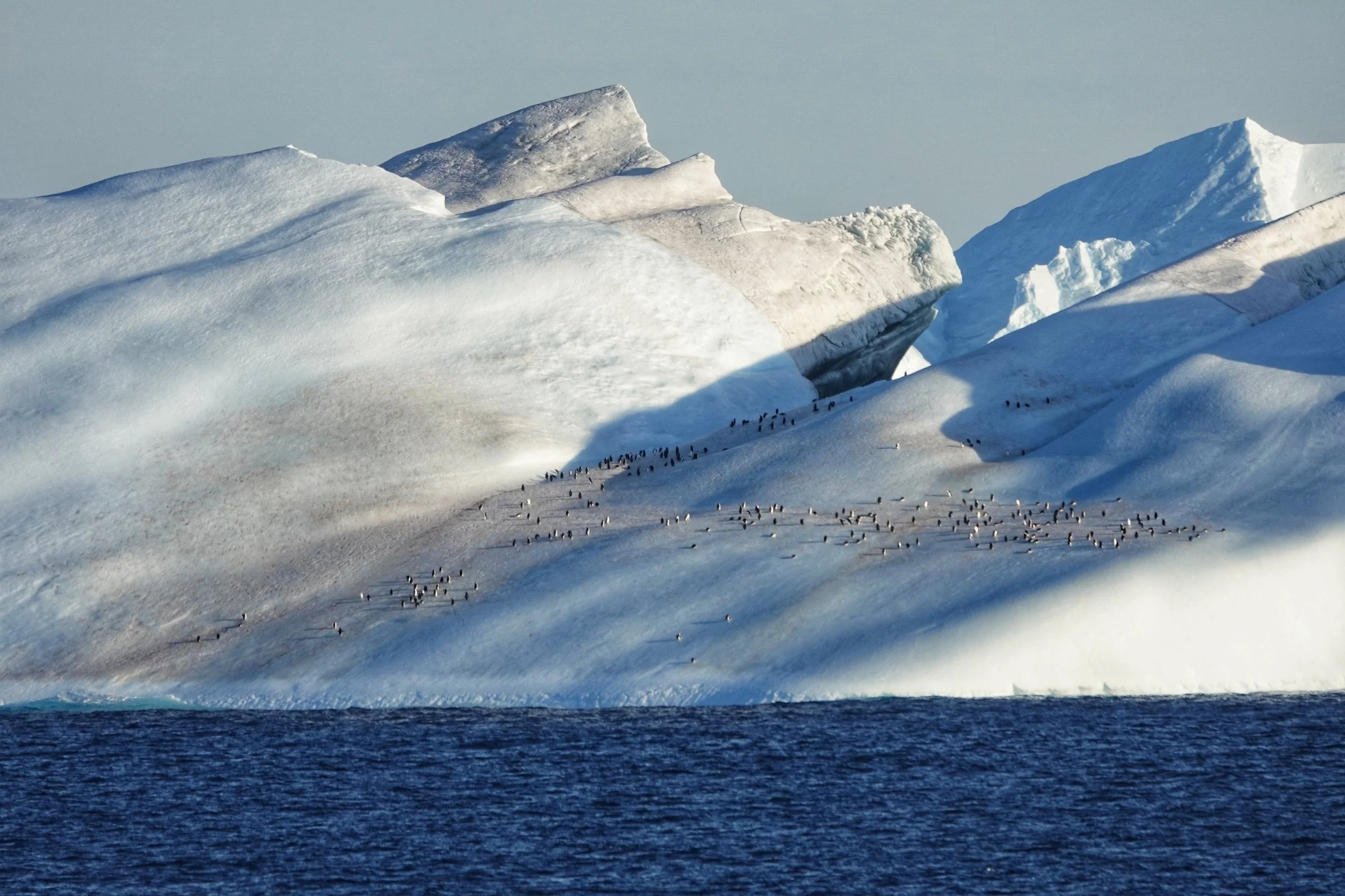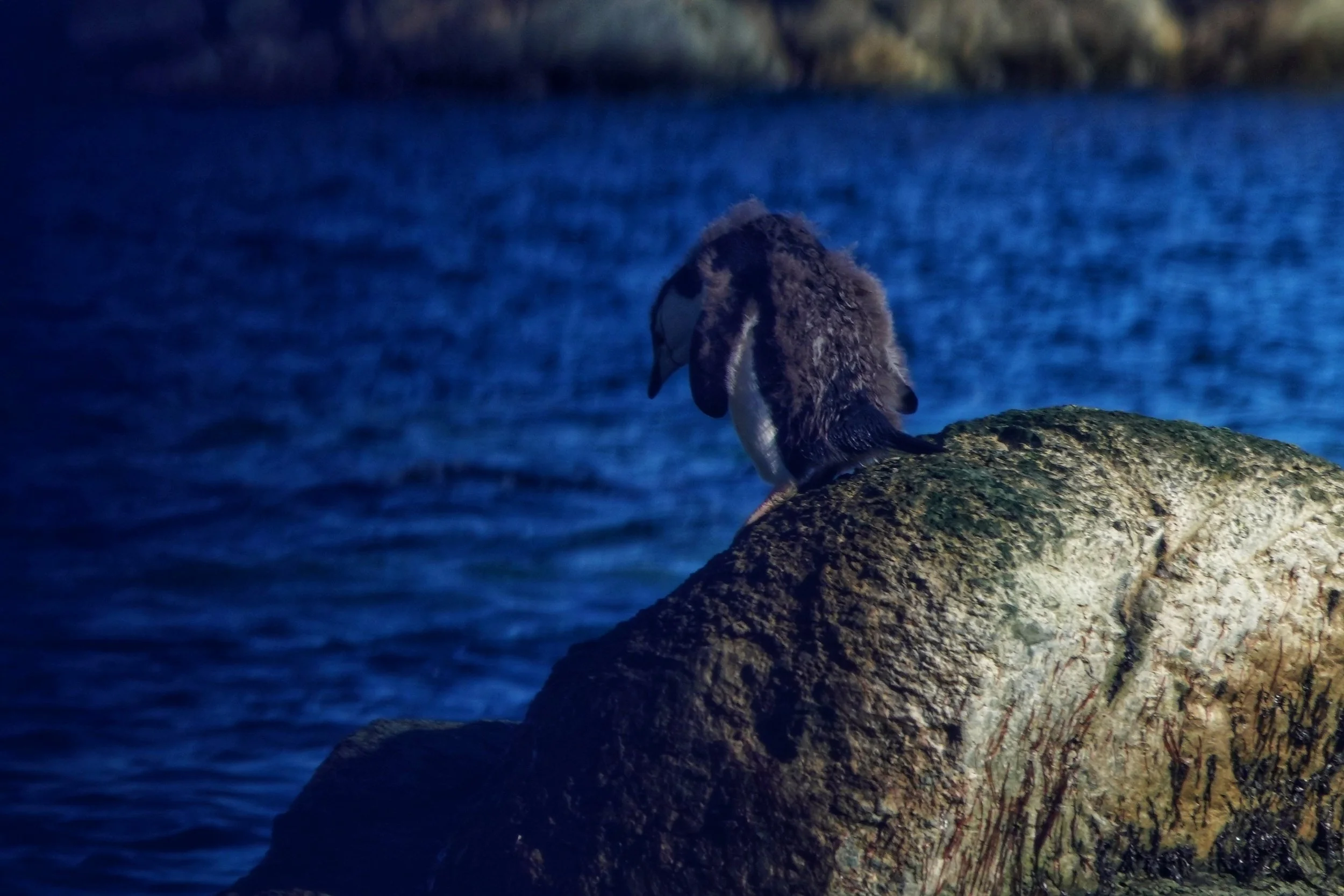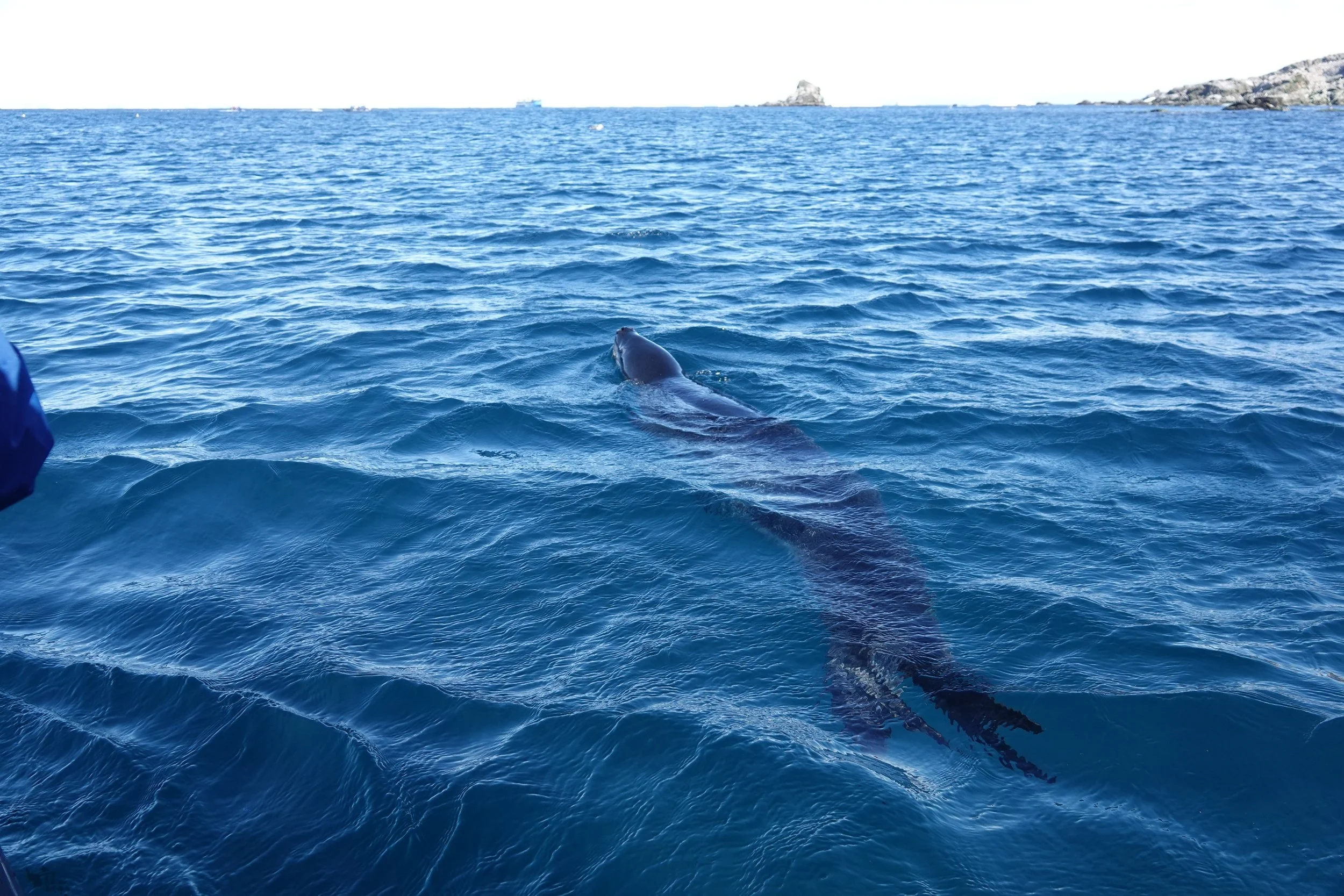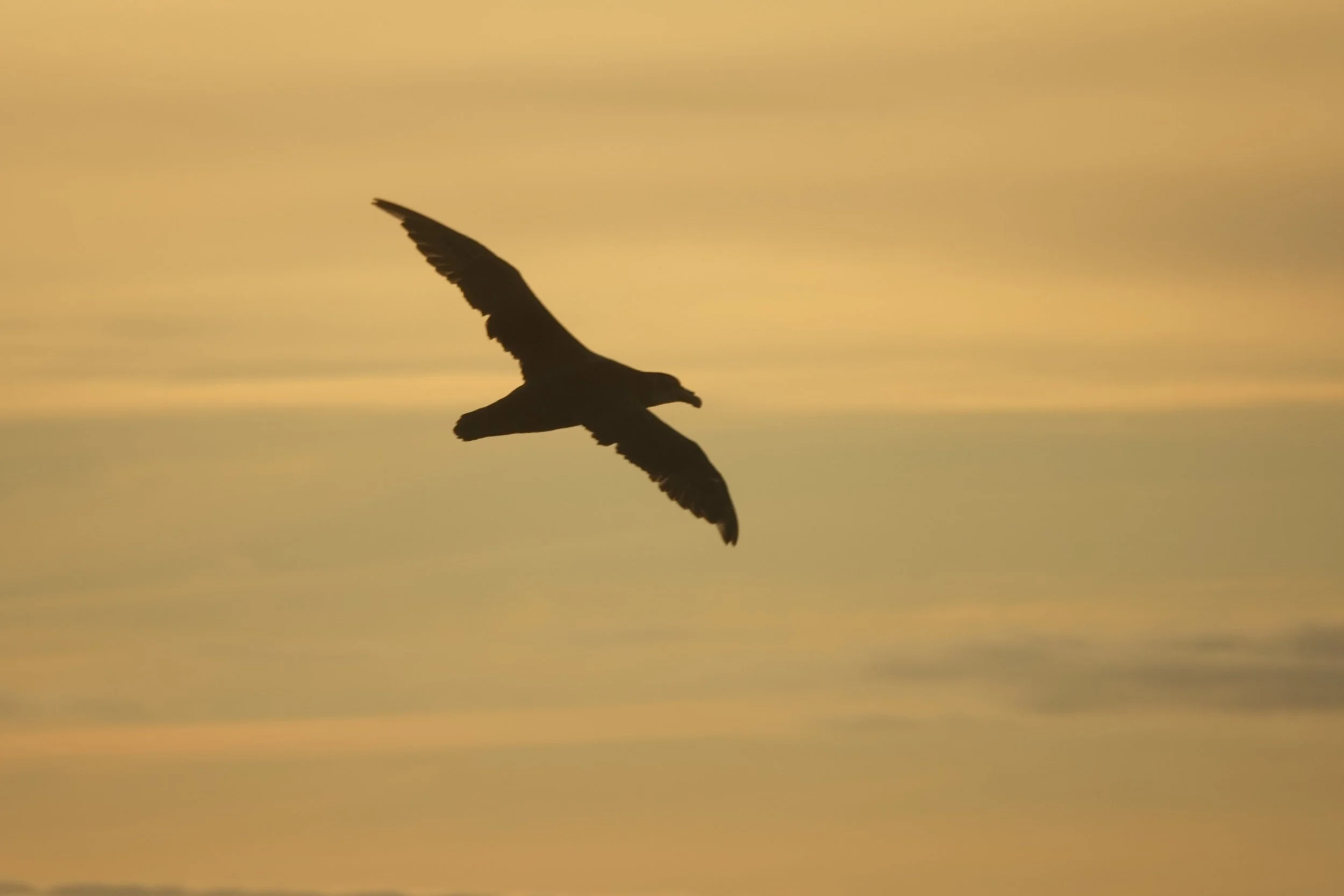Antarctica Expedition Cruise, Antarctica Peninsula Days 5 through 9
Part 2 of a multi-series post. You can visit Part 1 here: Antarctica Expedition Cruise Days 1-4
Antarctica Expedition Cruise Day 5
We woke up in the Antarctic Sound on the morning of day five—Kinnes Cove to be exact. AKA Iceberg Alley. And they weren't kidding. There were some impressive icebergs out our window. The expedition crew was super excited to have the opportunity to stop here because there is an abundance of wildlife and the weather doesn't usually cooperate for landings and exploring this area. Lucky us!
We started our day with everyone onboard getting a Covid test. And we got our first positive result. 😢 The person and their travel companion were quarantined in separate rooms. Meanwhile, everyone else had to go back to testing every morning.
The highlight of the day may have been seeing a leopard seal catch a penguin for his mid-morning snack… then another one catching one for dinner. OK, some might not think that would be a highlight, but nature doing nature things is pretty cool. This was our first time watching the poor little baby penguins being hunted by the leopard seals. It would not be the last, though! One of our guides mentioned that up until this trip, he had only seen a leopard seal hunt penguins once, but on this trip, we saw it three times! We learned that leopard seals are kind of jerks and like playing with their food. They'll catch a penguin only to let it go so they can chase it some more. The penguins have a few tricks hidden in their feathers, however. They will play dead in hopes that the leopard seal will lose interest in them. Once the leopard seal takes their eye off the penguin, the little penguin swims away quickly hoping it can escape to live one more day. Oh, the circle of life!
We saw our first Chinstrap penguins here and lots more Gentoo.
The ship traveled to the Eastern end of the Antarctic Sound to Brown Bluff over lunch. Brown Bluff is a tuya that formed over the past million years, erupting sub glacially within an englacial lake. How cool is that? There were plenty of birds, penguins, and seals. It’s an Important Bird Area (IBA) because it supports a breeding colony of about 20,000 pairs of Adelie penguins, as well as about 550 pairs of gentoo penguins. We were too late in the season to see Adelie penguins here, but would be fortunate to encounter a few here and there. I love how much the penguins are same-same, but different!
We finished off the day with a zodiac ride out to check out some cool ice and icebergs. In the Southern Hemisphere, almost all icebergs calve from the continent of Antarctica. It’s crazy to think that pretty much all the big icebergs we were seeing came from one place.
Antarctica Expedition Cruise Day 6
Day 6 was an early start with more Covid tests for the ship. The positive person's companion tested positive. 😢 And it sounded like there might be a cold making its way through the ship. The cold never really seemed to take hold of the passengers though!
We woke up off Paulet Island, located off the NE tip of the Antarctic Peninsula. It's a small geothermal island that stays ice-free all year round from the geothermal heat. It's known as another IBA. There was too much ice flow to land safely so we hopped on the zodiac and explored from there. Our guide Amanda even let us collect some water around the ice with the hope of spotting some plankton under the microscope back on the ship. (Don't worry, she threw the water (and plankton) back in the water when she was done—leave no trace!)
Fun fact! When sea ice melts in the Antarctic, the ice leaves behind a layer of fresh water on the ocean surface that is full of nutrients making it the perfect breeding ground for plankton. The plankton feed on krill—tiny, shrimp-like animals—which in turn are eaten by penguins, seabirds, seals, and whales. It's the food chain IRL!
After collecting some samples near the sea ice, we spotted a sea cucumber-looking thing. It was not a sea cucumber… it was a salp. Salps are really cool creatures that move by contracting and pumping water through their gelatinous body. They are known as one of the most efficient examples of jet propulsion in the animal kingdom.
The real highlight of the morning though was when a fur seal tried to eat me 😂 OK, he didn't really want to eat me—I was innocently sitting at the front of the boat watching the fur seals swim about when this guy came swimming right towards me at the front of the boat. The next thing I know, he's jumping right at me with his mouth wide open! Lucky for me he bounced off the boat and didn't make it!
The fur seal acting all innocent before he tried to jump in the boat and eat me!
Over lunch, we made our way among some small islands in the Southern Ocean to the Danger Islands, a group of six small islands of the tip of the Antarctic Peninsula. The islands are home to 1.5 million—that's right: million—Adelie penguins. Only recently discovered in 2015, this penguin supercolony had gone undetected for decades, partly because of the remoteness of the islands themselves, and partly because of the treacherous waters that surround them. Even in the summer, thick sea ice fills the nearby ocean, making it extremely difficult to access. Adelie penguins only hang out on shore from October to February—their breeding season. Otherwise, they are hanging out in the middle of the South Ocean eating krill. At seven to nine weeks old, the chicks leave the colony to go to sea. Most don't return to the colony again until they are old enough to breed at three to five years old. Since it was March, there weren't many Adelie penguins to see. One more reason to take another trip maybe?
This would be our last stop in Antarctica before heading to Elephant Island. Not our last chance to see the massive icebergs floating by though. And massive they were! Truly works of art shaped by the water and wind.
Antarctica Expedition Cruise Day 7
We woke up off of Elephant Island to calm wind and water and fog and more Covid tests. No new positive tests… hooray!
If you are familiar with Shackleton's expedition to Antarctica back in 1914, you'll remember that this is where he left 22 of his men after the Endurance was locked in by the sea ice then crushed. After being trapped in ice for 281 days the Endurance eventually sank. Shackleton and his men used lifeboats and drifting ice flows to make their way north towards land. Three months later, they landed on the inhospitable Elephant Island. 22 of the men camped under upturned boats while Shackleton and five of his men took a small 22-foot boat across the treacherous Drake Passage to South Georgia 700 nautical miles away. The men left behind survived on penguins and seal blubber until they were rescued 137 days later.
While waiting to get on our zodiac, we had an opportunity to see the glacier on the island calving. Calving is when pieces of the glacier break off into the water. For those of you on Facebook, you can see my video of the glacier calving. It's an awesome sight to see and it's why we can't get too close to the glaciers. It's not just the ice and icebergs that we have to worry about, but also the large waves that are generated from the calving.
It’s rare to have the right conditions to land on Elephant Island. One of our guides said it best, “Landing here is something a guide can go an entire career without ever accomplishing. It's not normally on our routes and when it is, conditions almost never allow us to put Zodiacs in the water, let alone land. With the help an incredibly capable team and the weather gods on our side...we made it happen.” We had an expedition crew that have been guiding for more than a decade and never had the opportunity to land at this site.
The landing site was small and only about a meter above the water. Each time we land on a site, the crew brings enough supplies—food, shelter, and medical supplies—to last a week in case the weather turns and we aren’t able to get back to the ship. This landing was no different. The crew set up the landing site with our big bags of emergency supplies. Remember when I said that the calving glaciers can create big waves? One of the waves washed over our landing site, taking all of our emergency supplies out to sea. Fortunately the crew was fast-acting and had the passengers in the zodiac before they even realized a wave was coming at them. The crew made sure every last bag and its contents were retrieved from the sea before we left though. I bet those chinstrap penguins were bummed not to get some free tents.
Even with the calving generating some waves, we were able to see the large chinstrap penguin colony on the Island at Cape Wild and the statue of Captain Luis Alberto Pardo, the man who rescued the 22 men that survived over 4 months on the Island. Note: I have NO idea how they managed to survive the cold.
Over lunch we traveled through the Scotia Sea. It was so foggy there was practically no viability, but we were busy prepping for our landing in South Georgia in a few days. Prep includes biosecurity checks of all our outer gear: boots, coats, hats, etc. Anything that could come in contact with the island has to be inspected for even the smallest seed or pebble. South Georgia Island is extremely strict about introducing any non-native seeds, soil, and organic materials and performs random checks on the ships to ensure there are no breaches in security.
The afternoon was spent at sea with lectures about Elephant Island and women in Antarctica. There was a surprising number of female guides on our boat: six of the nineteen guides were women.
Antarctica Expedition Cruise Day 8
Today was an especially exciting day. Not only did we wake up at the South Orkney Islands, but also to the news that Shackleton's sunken ship, Endurance, had been discovered. Then the Expedition leader said we could take the zodiacs out. We are told that it is really rare to have good enough weather (waves and wind) to swing by these islands, but even more rare to be able to get out on the zodiac here!
We explored what is one of the largest Chinstrap penguin colonies in the world. Then we encountered three humpback whales—one just a baby. I got a few pictures, but Jim got some crazy cool video of one right next to our boat. We also witnessed two leopard seals hunting (and playing with their food 🙄). Those poor baby penguins… but hey, leopard seals have to eat too!
Fun fact about leopard seals: they are the third-largest seals behind walruses and elephant seals and their only predator is the Orca.
As their prey (penguin or seal) swims to shore, the leopard seal cuts them off and chases them back into the water. They may do this over and over again until the penguin successfully makes it to shore or succumbs to exhaustion. Sometimes they kill the penguin and don't even eat it. If they are going to eat it, they violently whip it around to basically turn it inside out because they don't like the feathers. Unlike fur seals and weddell seals, leopard seals have been known to attack and kill people.
The defining feature of the chinstrap penguins is a cute little strip under their chin making it look like they are wearing little helmets. In late February they start the molting process lasting a few weeks. By mid-March, they can return to the sea with their new plumage. Since we were there at the end of the molting process, when we were out on the zodiac near the colonies it sometimes looked like it snowing due to the molted feathers flying around!
The ship's Captain routed us around the south of the Orkney Islands plus opened up the viewing wings at the front of the boat allowing us spectacular scenic views of the Orkney Islands. The islands are made up of rock and ice with 85% of them glaciated and are one of the most important breeding grounds in the entire world for Adelie and Chinstrap penguins.
This route also put us next to the iceberg graveyard. Massive icebergs flow out of the Weddell Sea and get caught along a ridge in the ocean stuck until they melt enough to dislodge.
Overnight we headed towards South Georgia Island, basically following Shackleton's journey from Elephant Island to South Georgia. It's absolutely crazy how Shackleton managed to get there on a 22’ boat. We would see a replica of the boat at South Georgia Island and it was even smaller than I had pictured in my head!
Antarctica Expedition Cruise Day 9:
"One's destination is never a place, it's a new way of seeing things"
—Henry Miller
Day nine was an at-sea day as we followed Shackleton's route from Elephant Island across the Scotia Sea to South Georgia Islands. In anticipation of our arrival, the captain turned the clocks ahead an hour. One less hour of sleep... but it was a good day for a nap anyway! Also, more Covid tests in order to land on South Georgia. Everyone continues to test negative (other than the two original positive tests).
Our day was full of lots of lectures by the expedition guides teaching us about the penguins and seals of the Southern Ocean and preparing to land on South Georgia. And lots of fin whale sightings along the way!
Oh, and eating of course. We ate most dinners on the top deck in the Panorama Restaurant, a small dining area where they have learned all our favorite things. (Like we never ever say no to dessert.) The main dining area is loud and busy and not many seemed to want to make the effort to climb to level eight to the Panorama Restaurant. All the better for us!
Next up: Antarctica Expedition Cruise, South Georgia Island! The next stop was a few days on South Georgia Island. The density of wildlife and the history of the island was fantastic. I'm looking forward to revisiting our time there and writing about it.
(click on the photos below for a full-sized uncropped version.)

